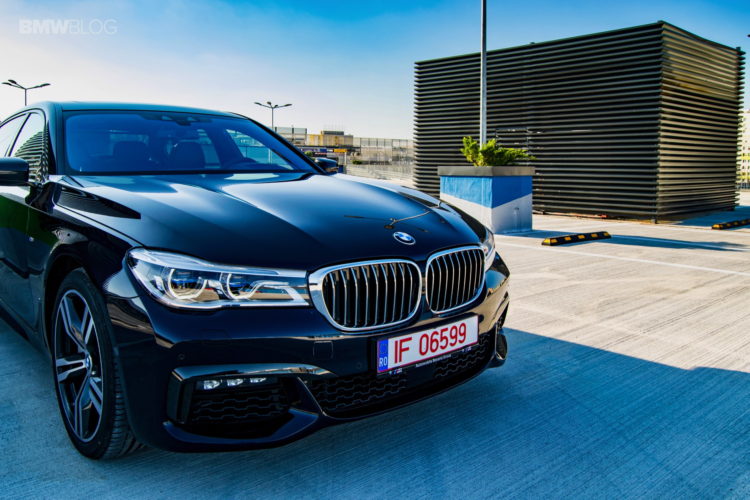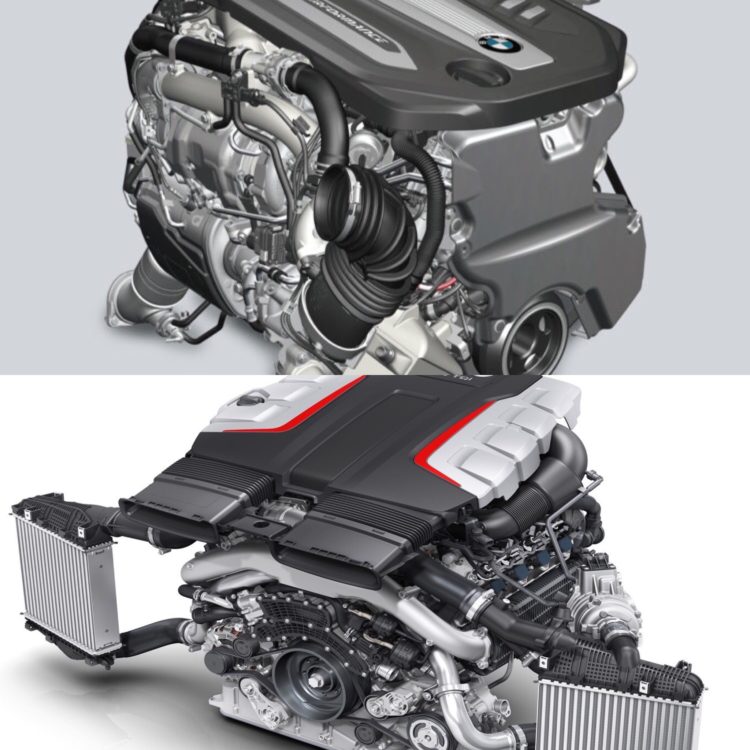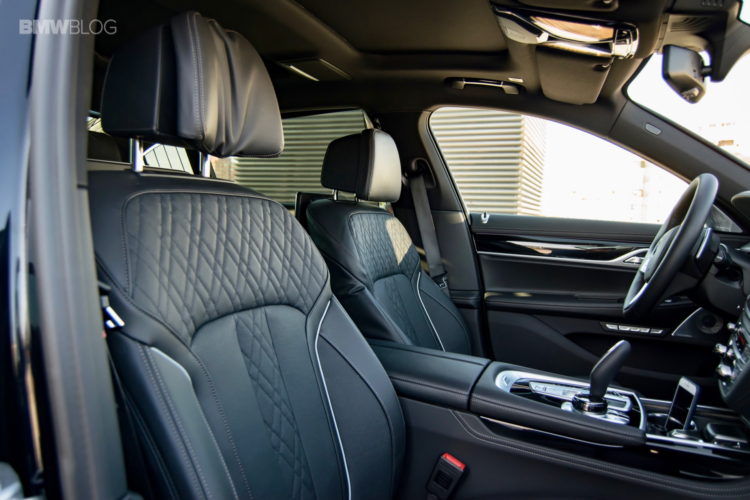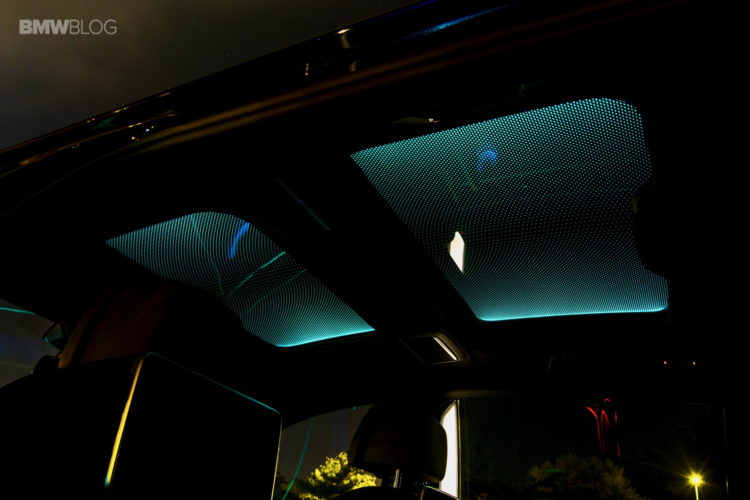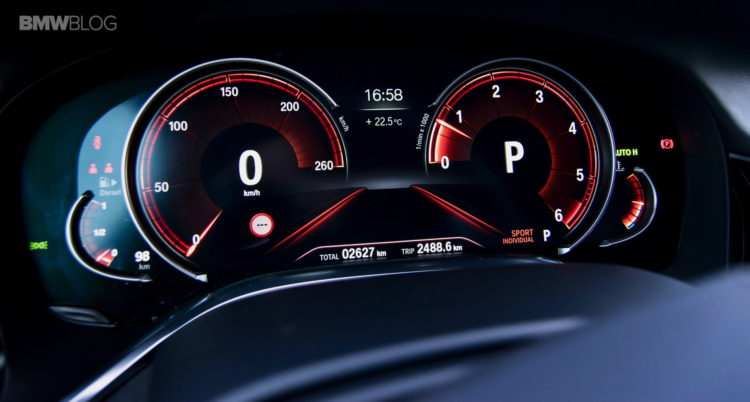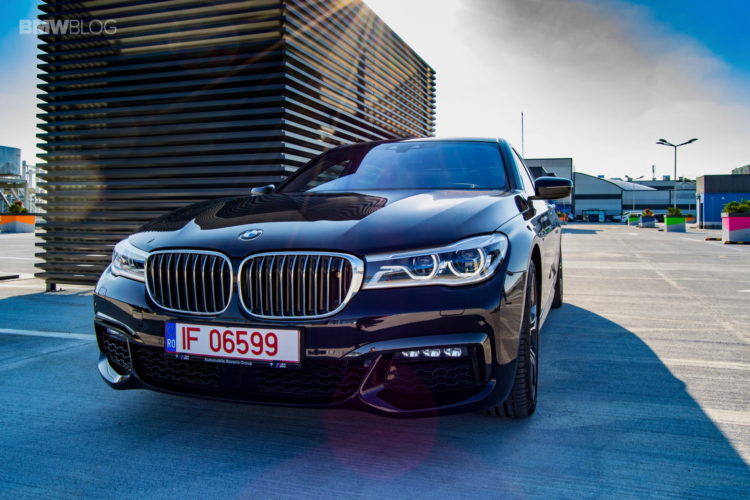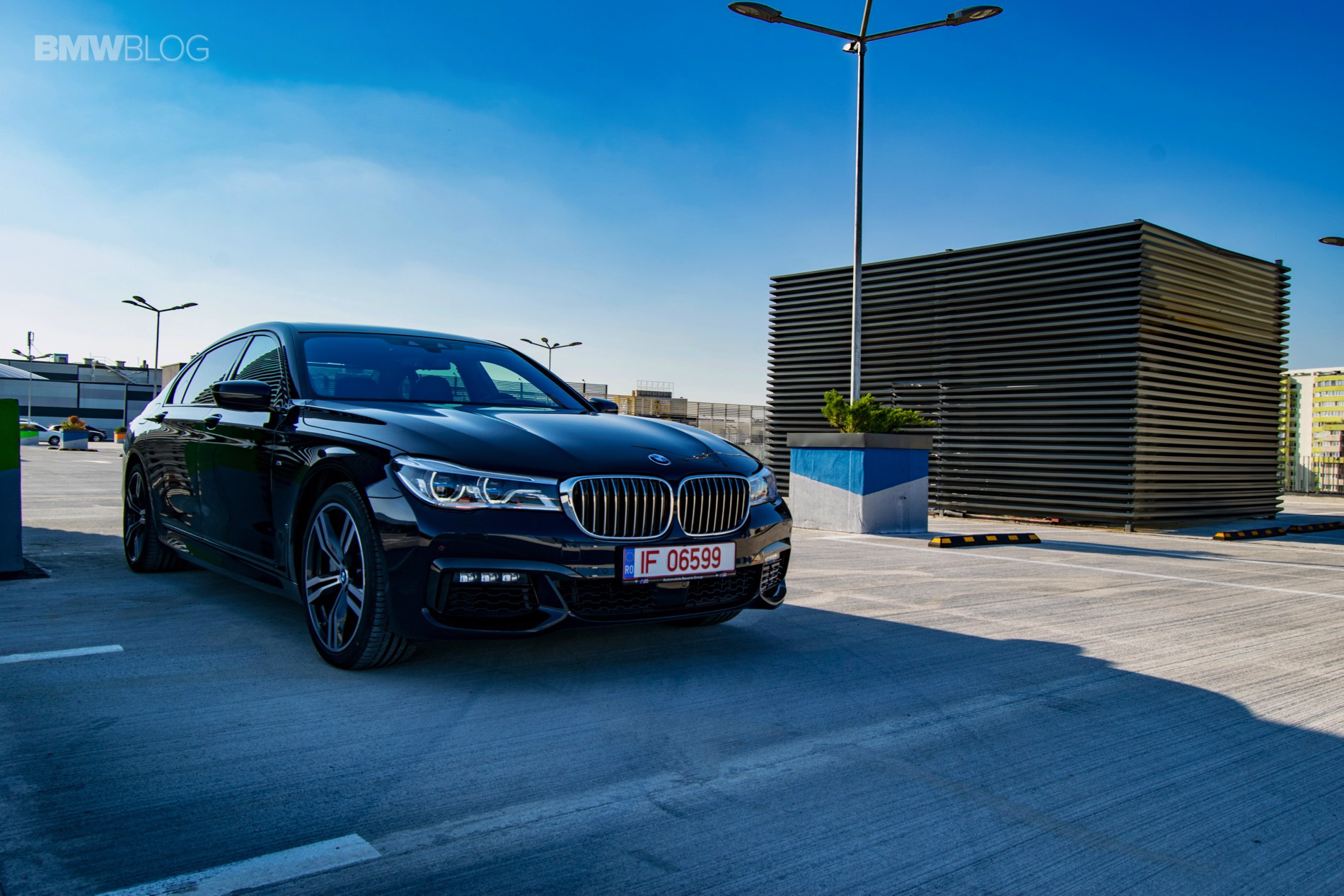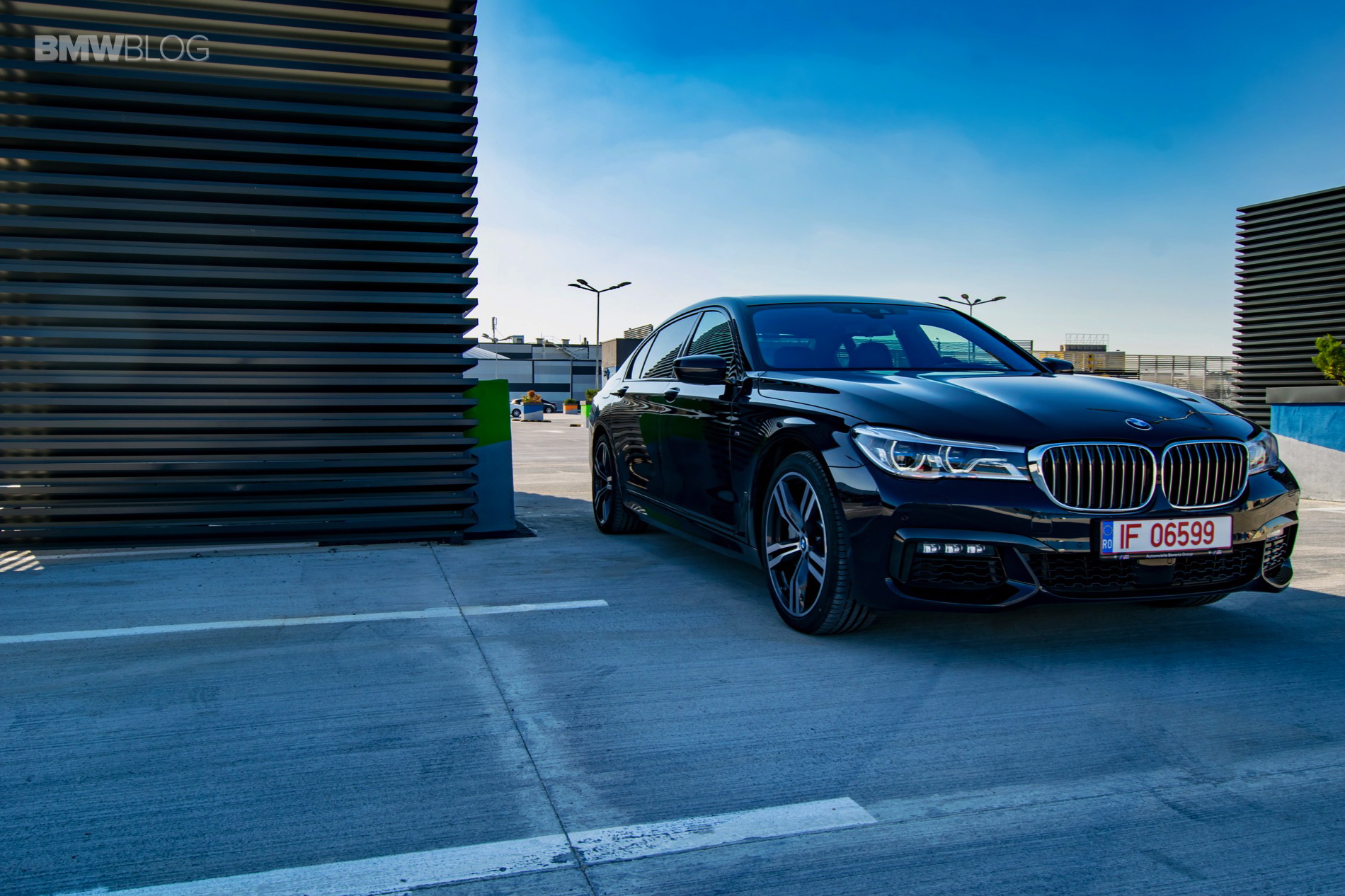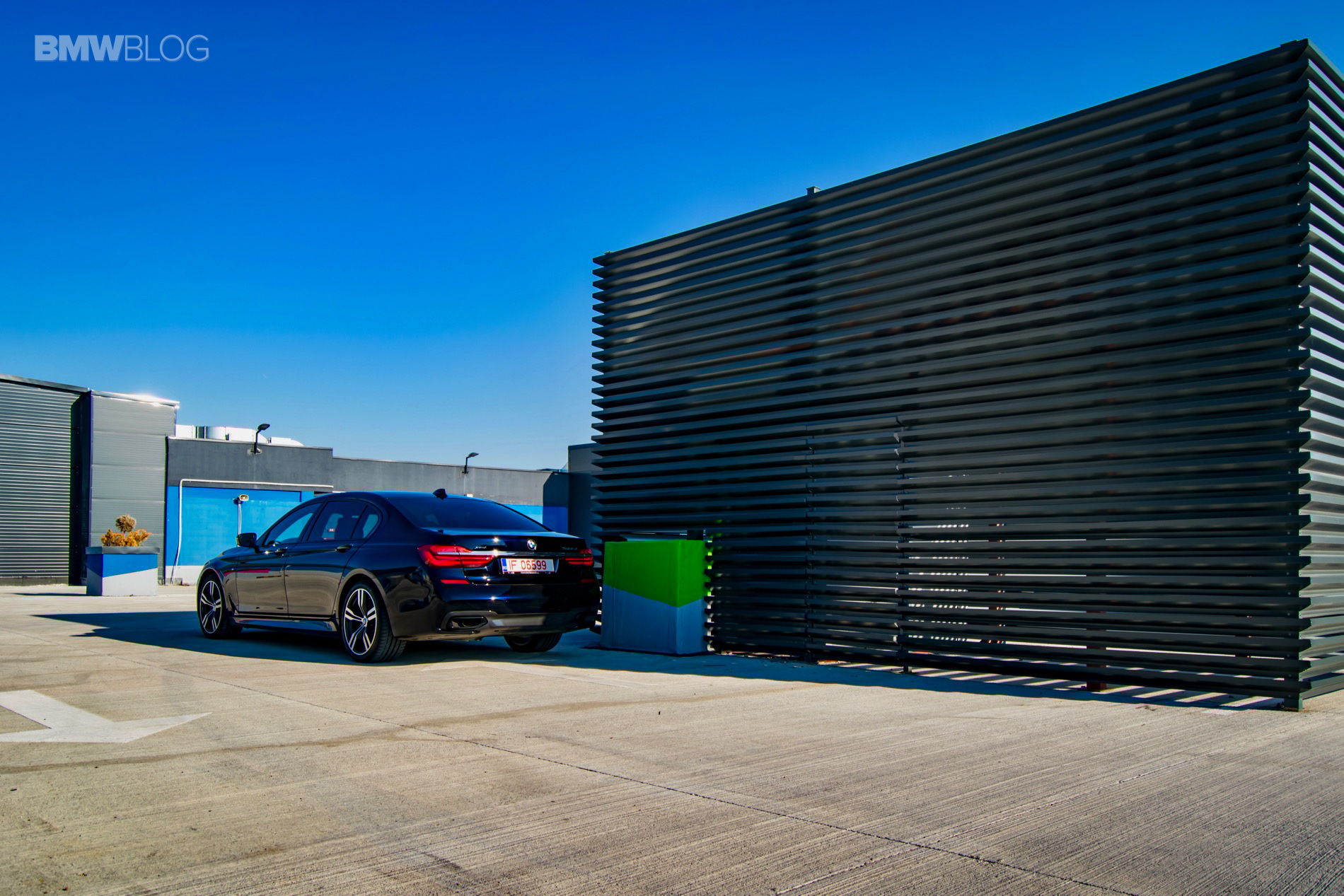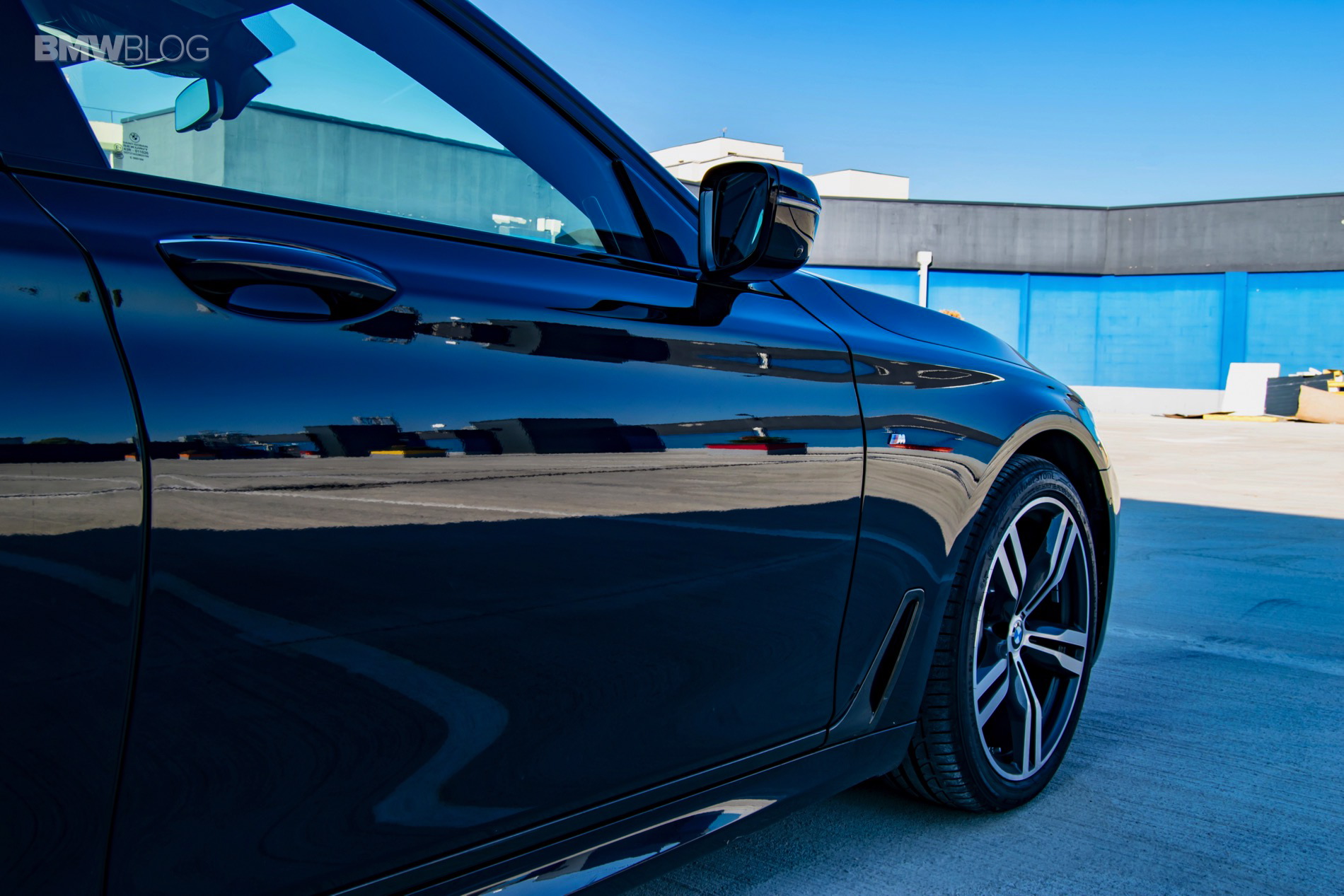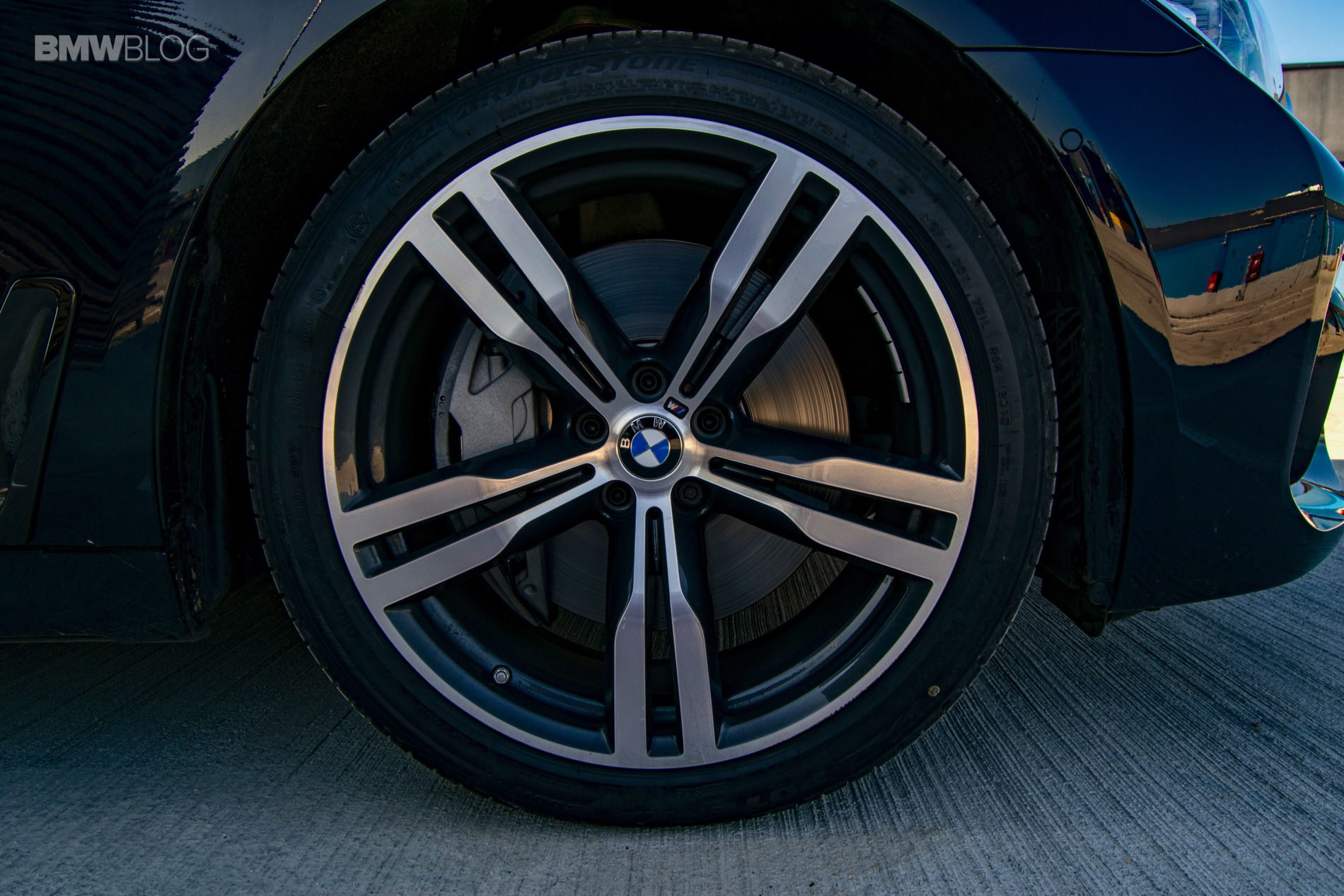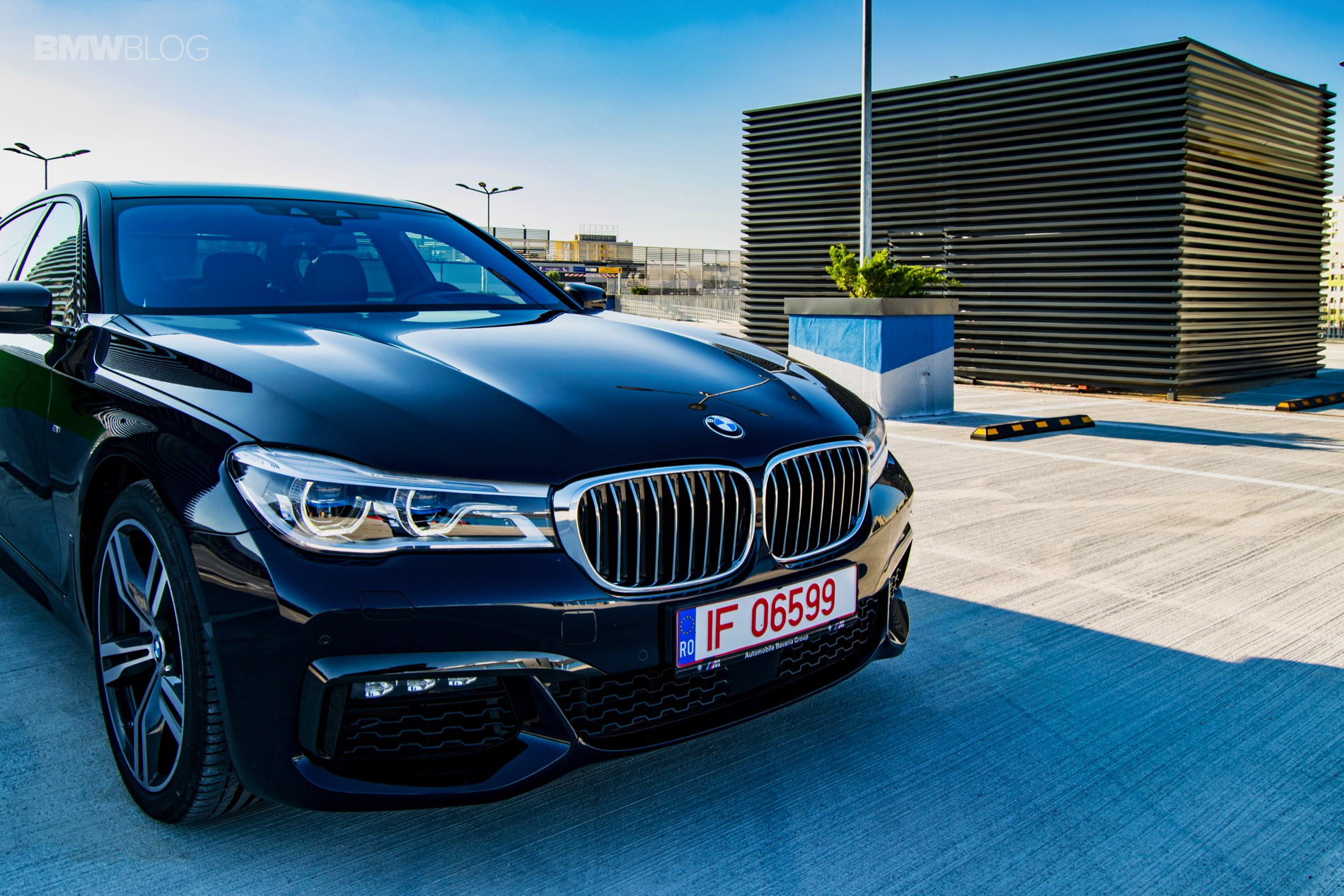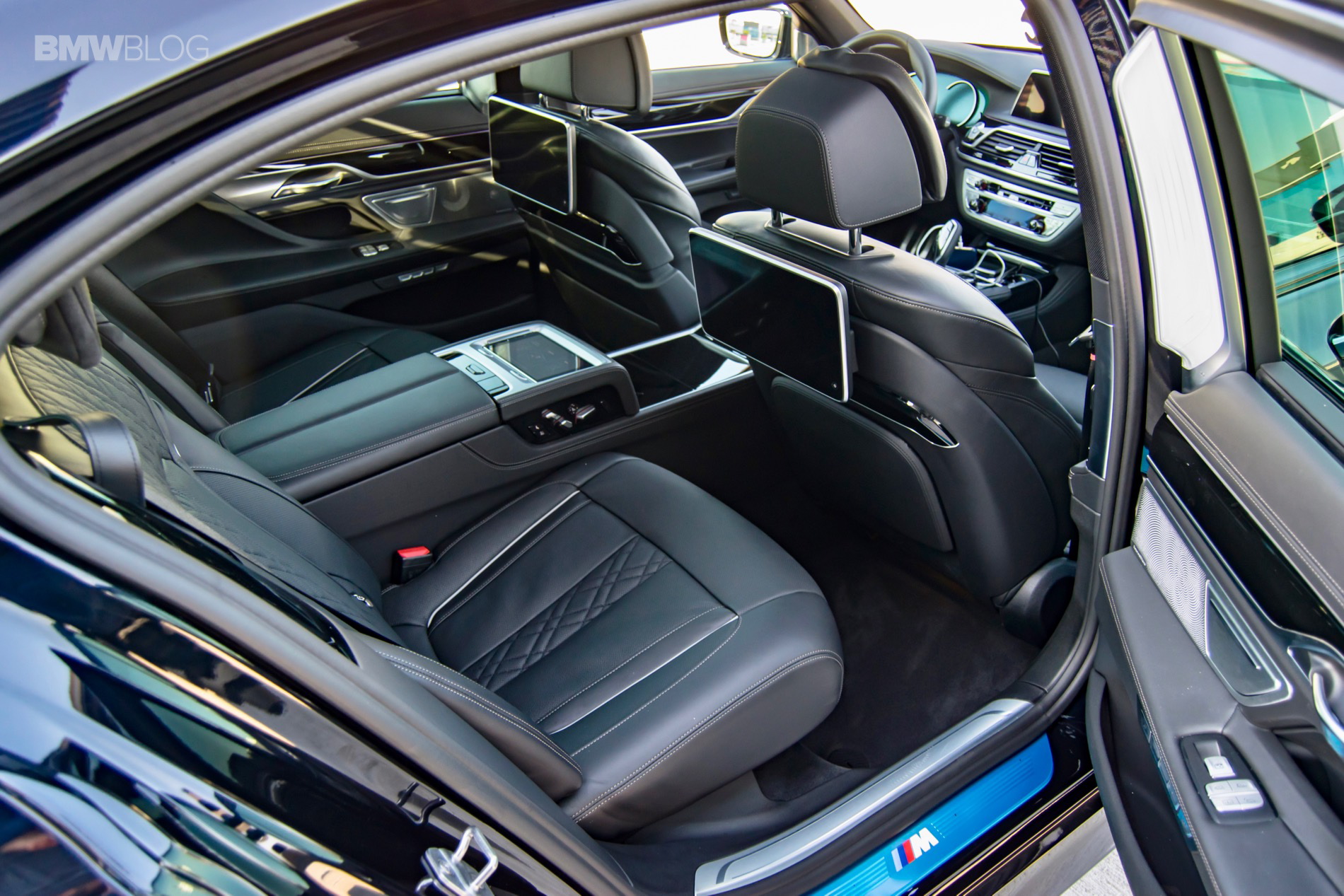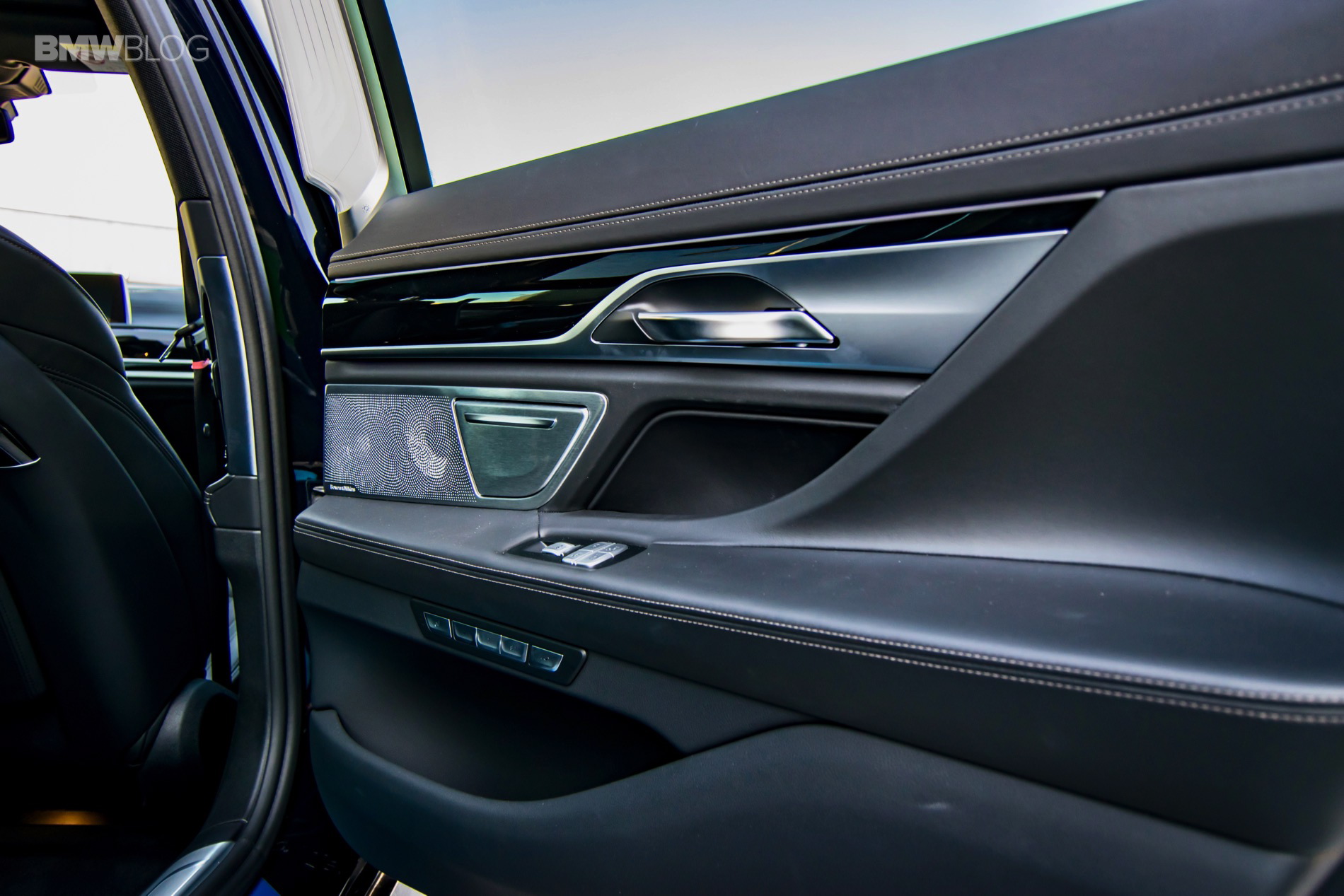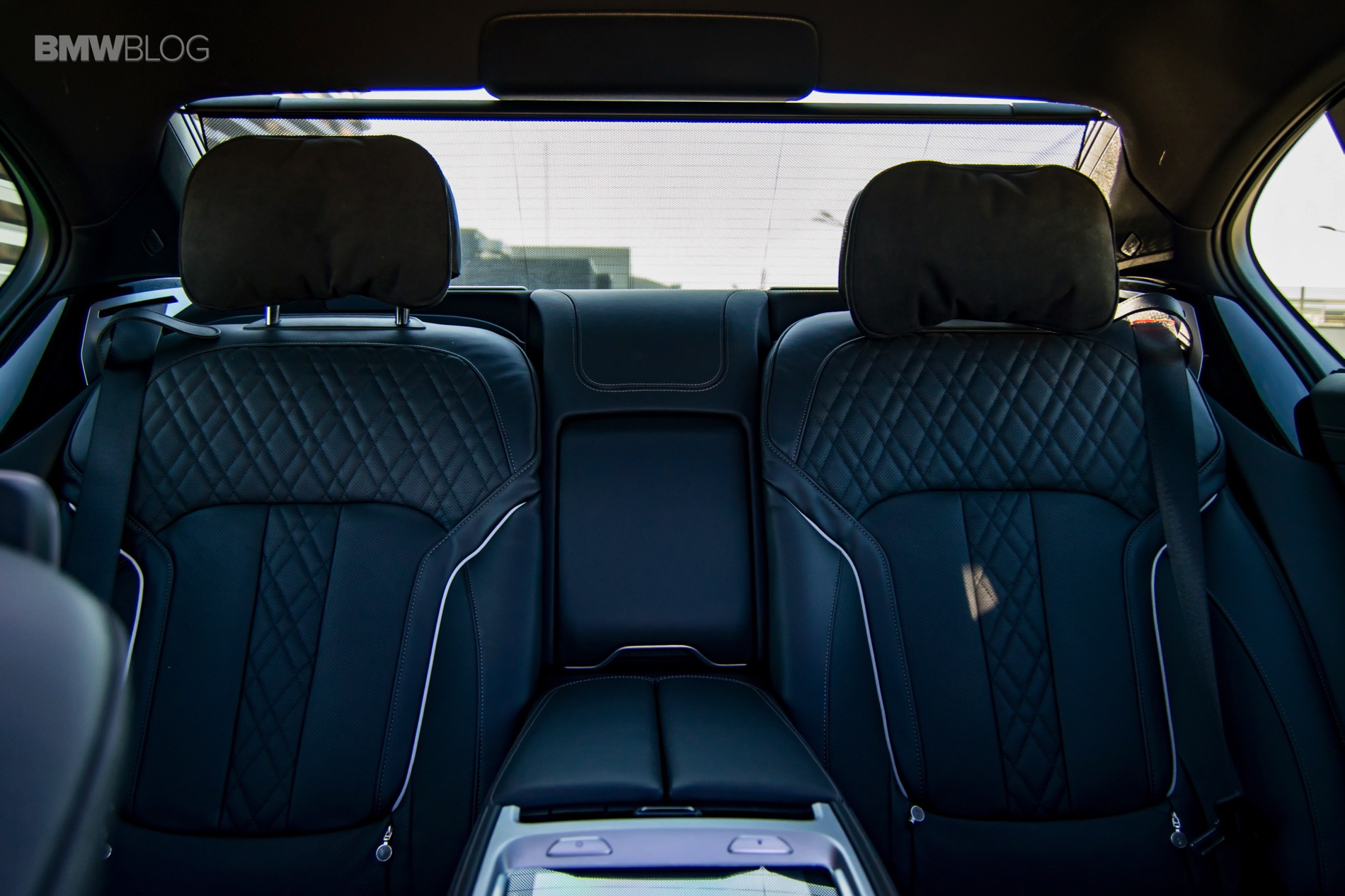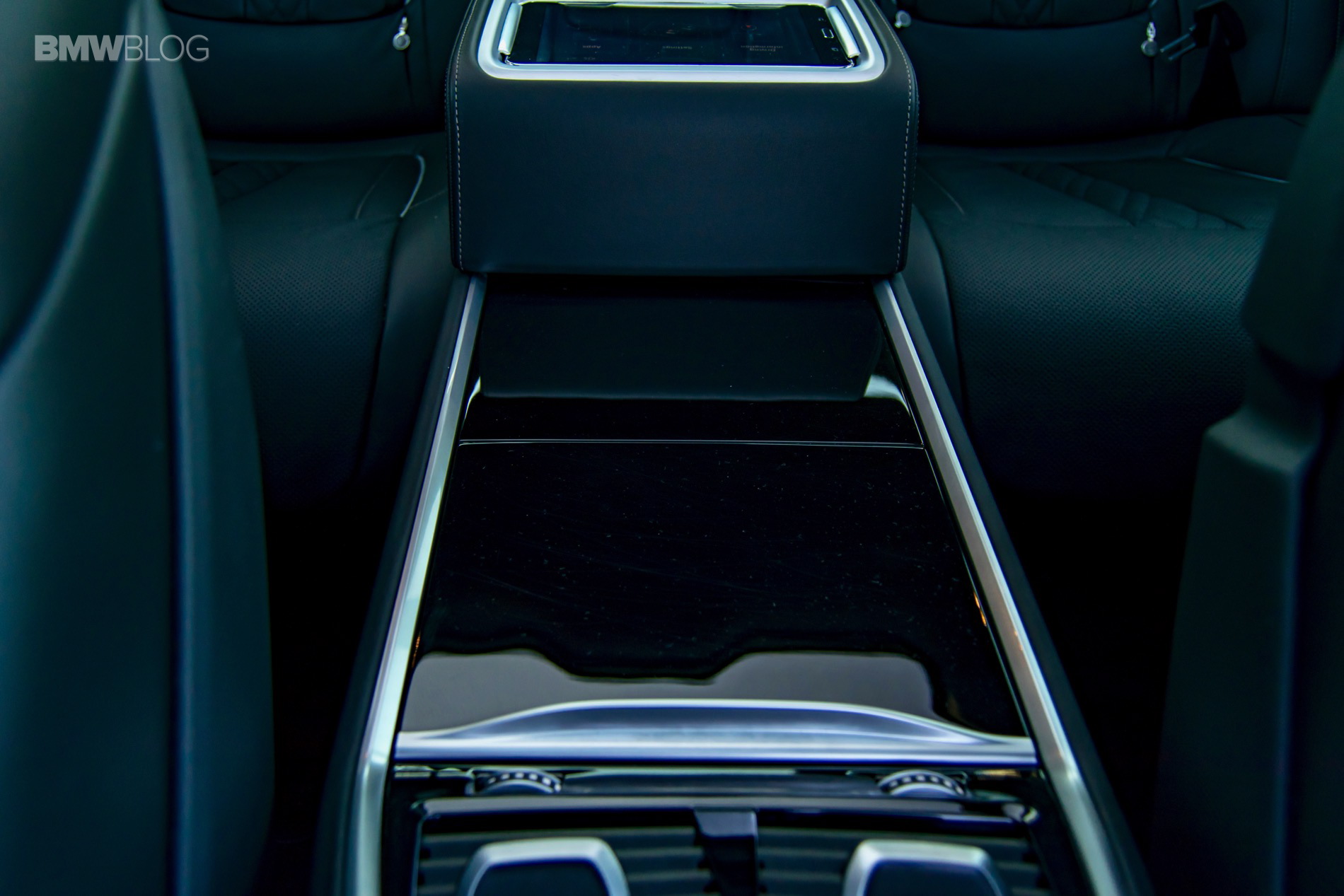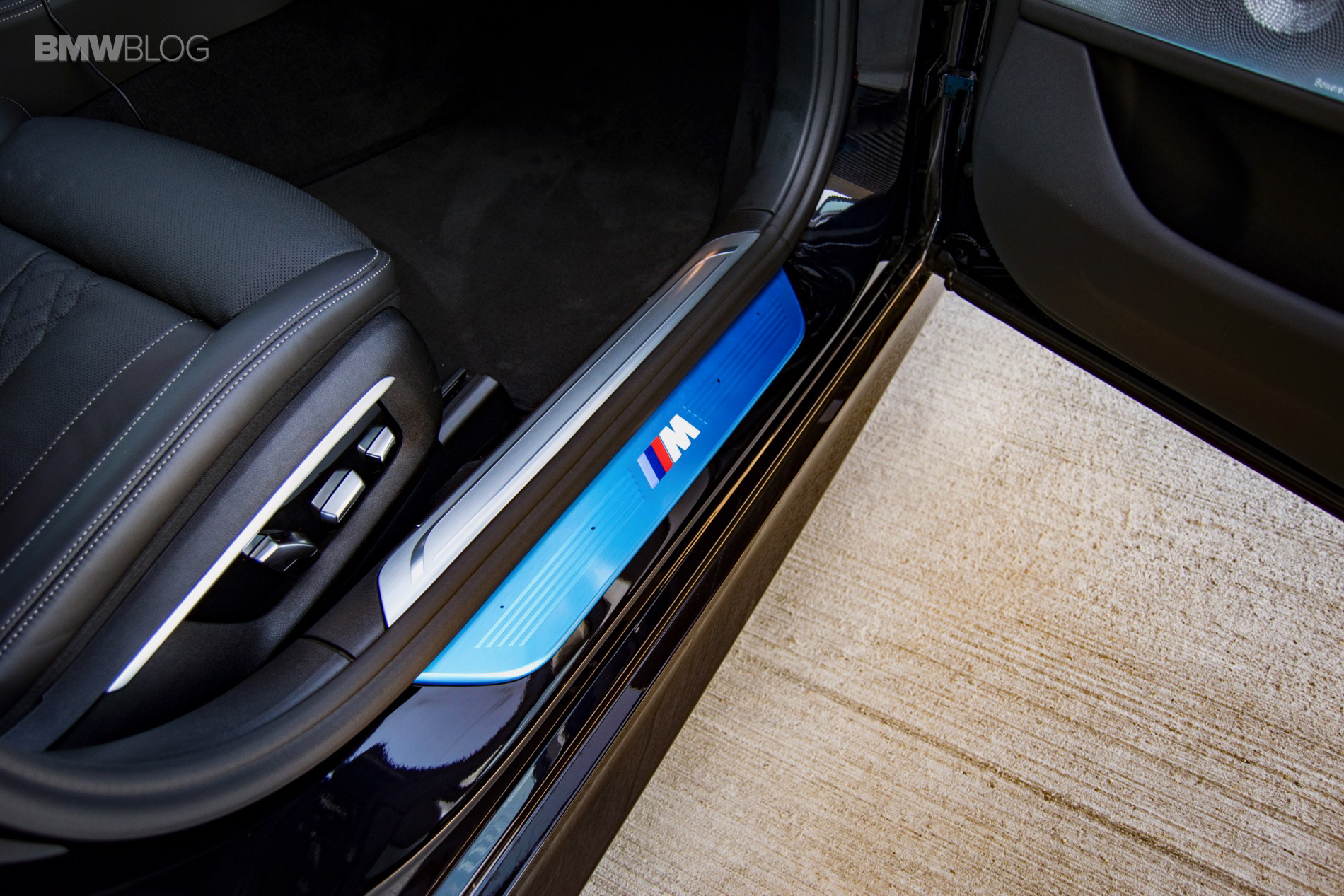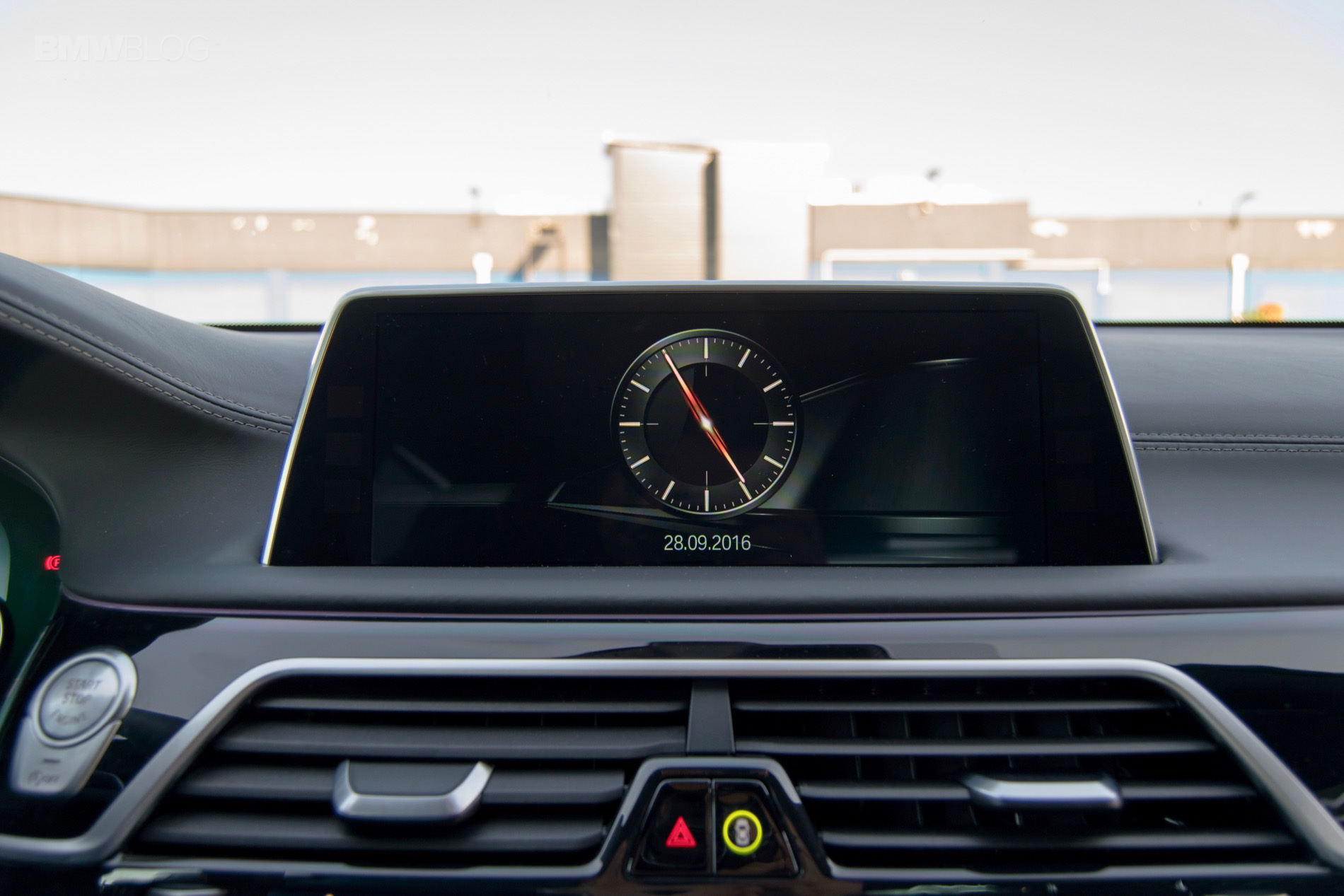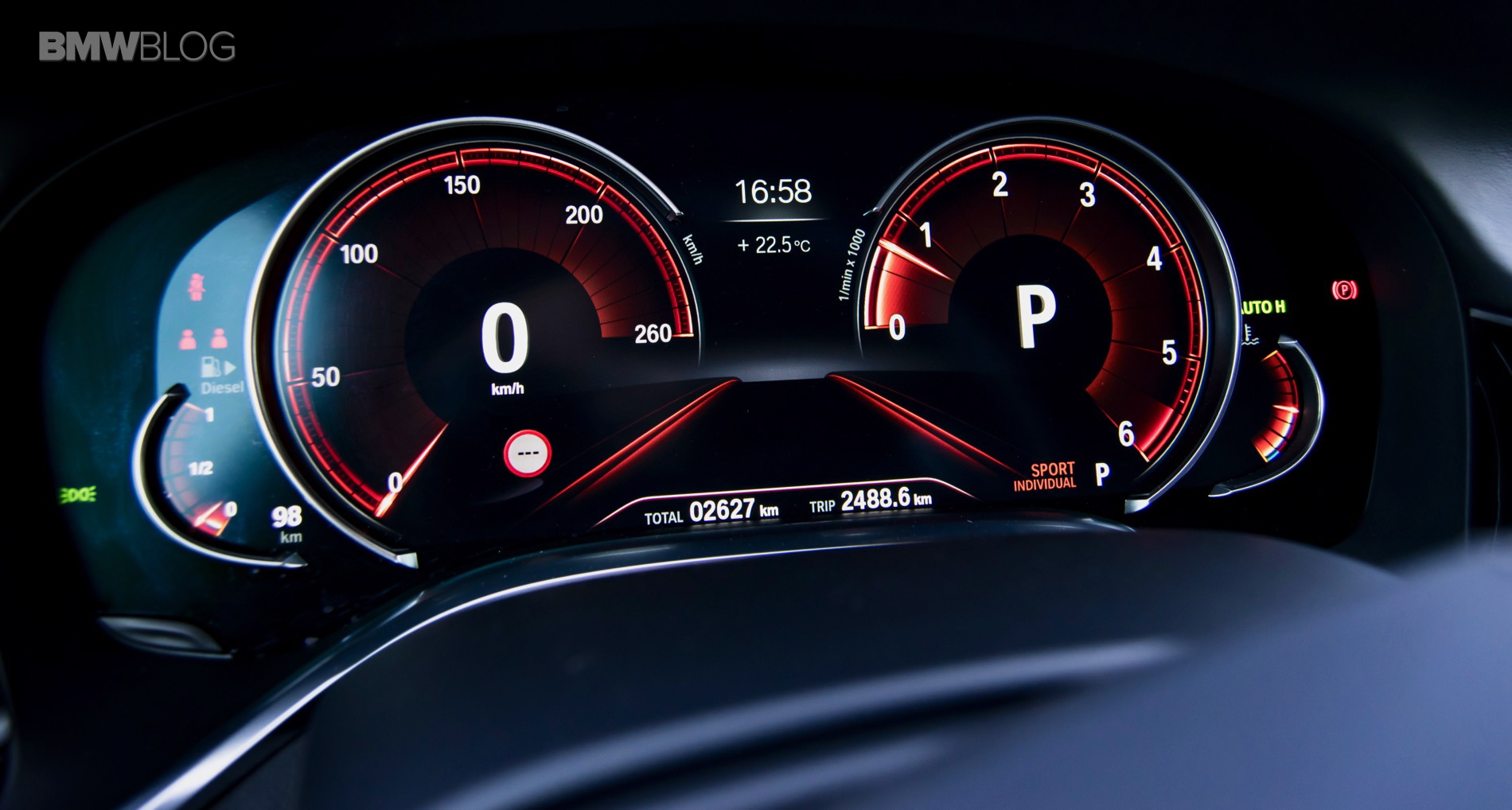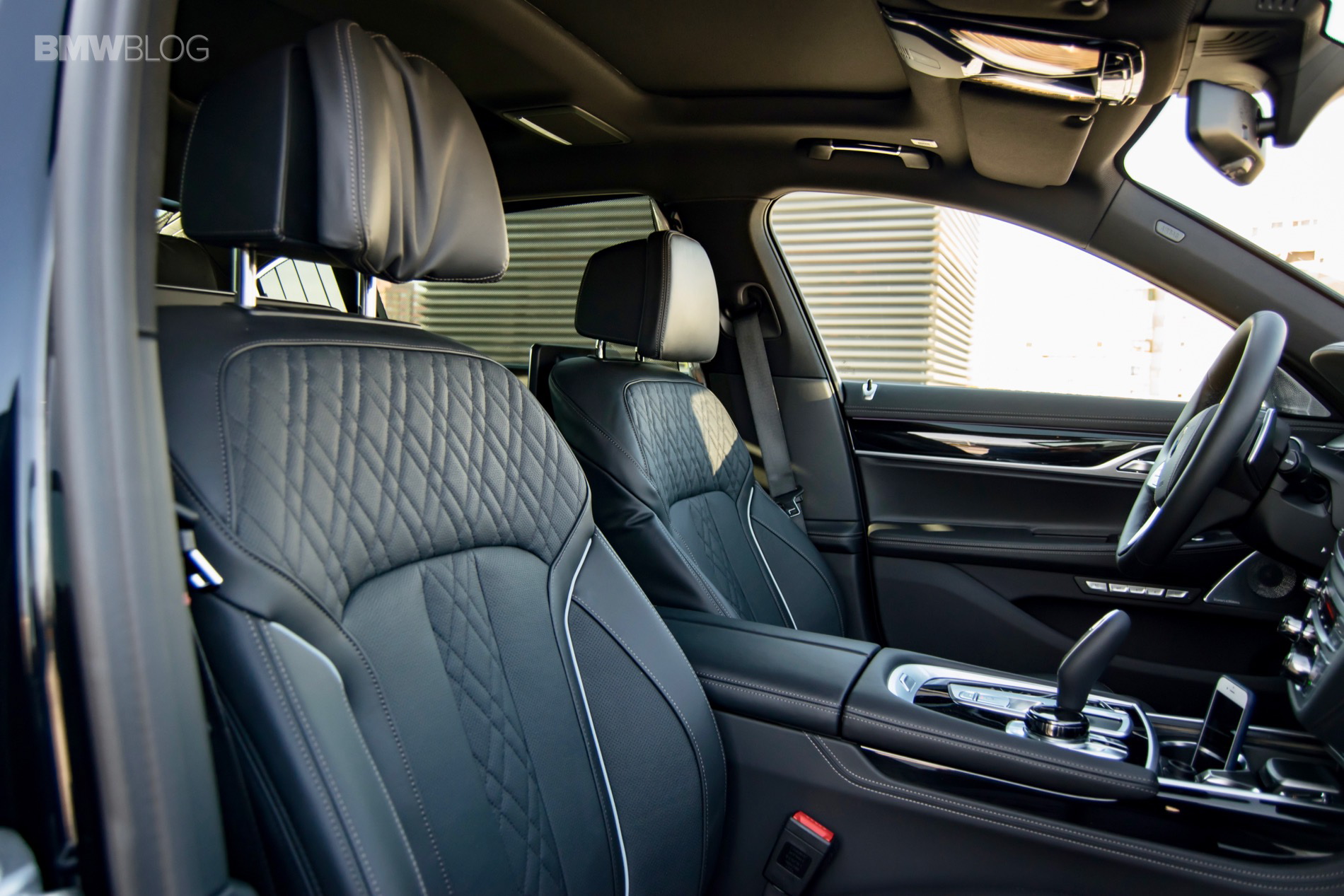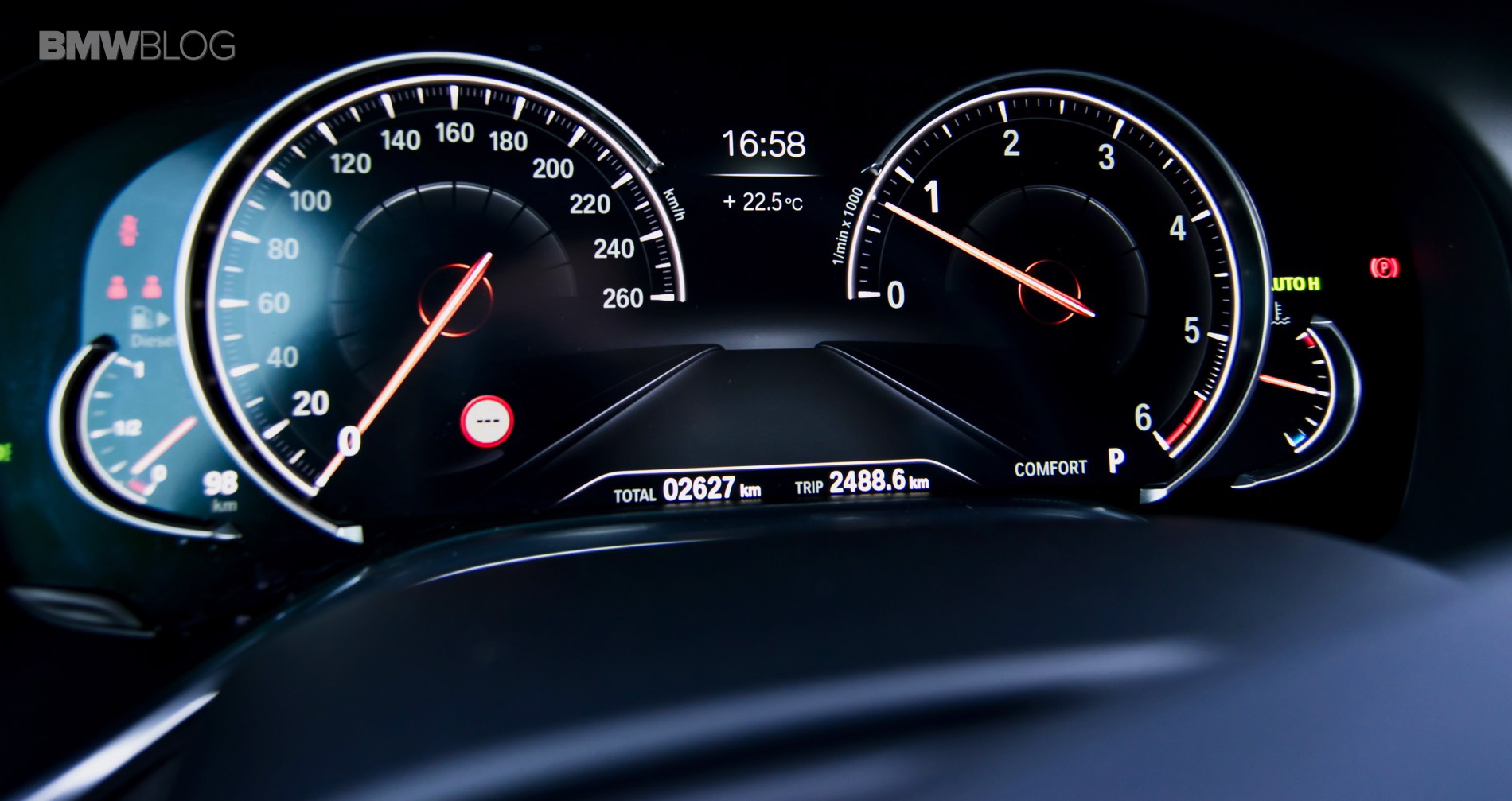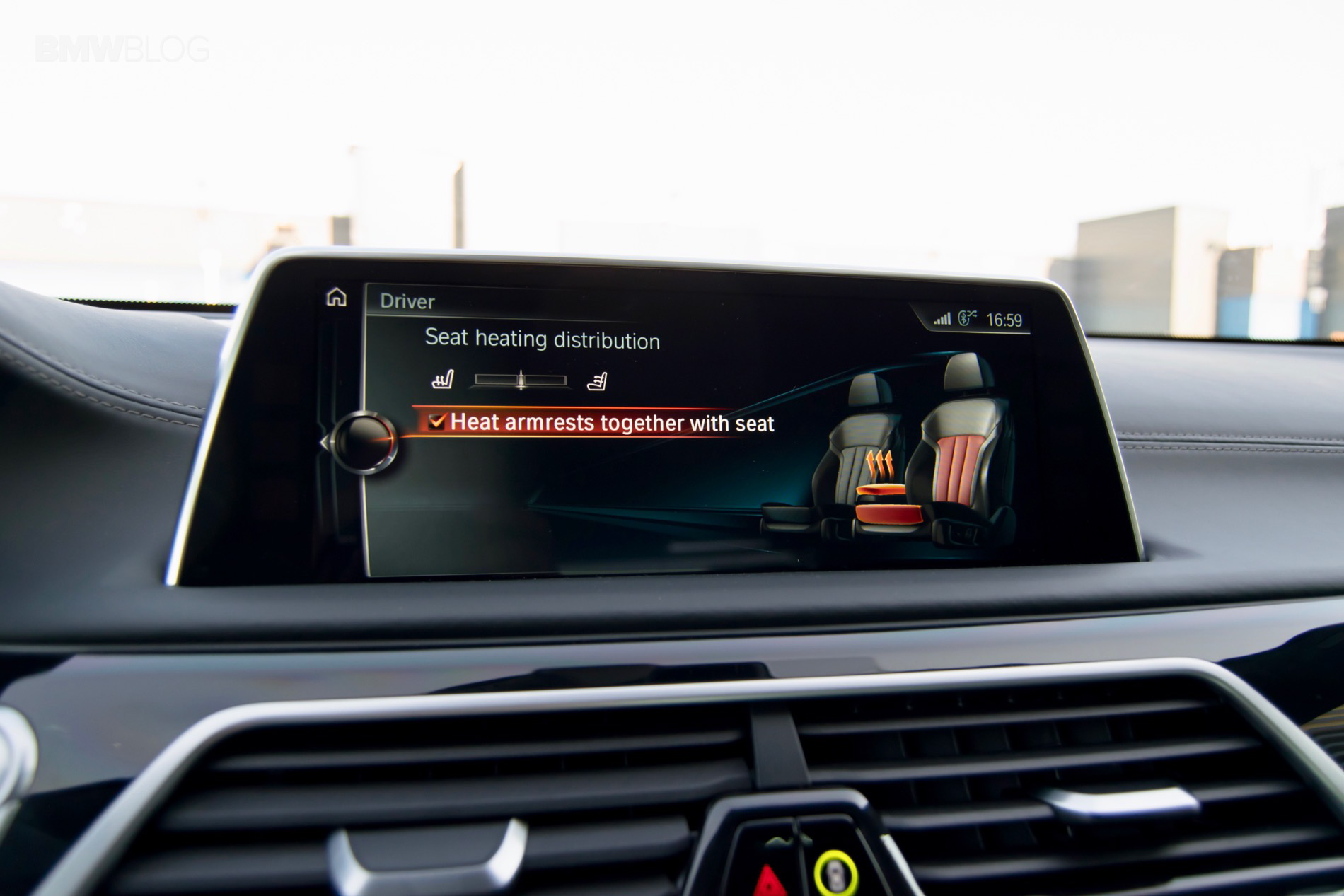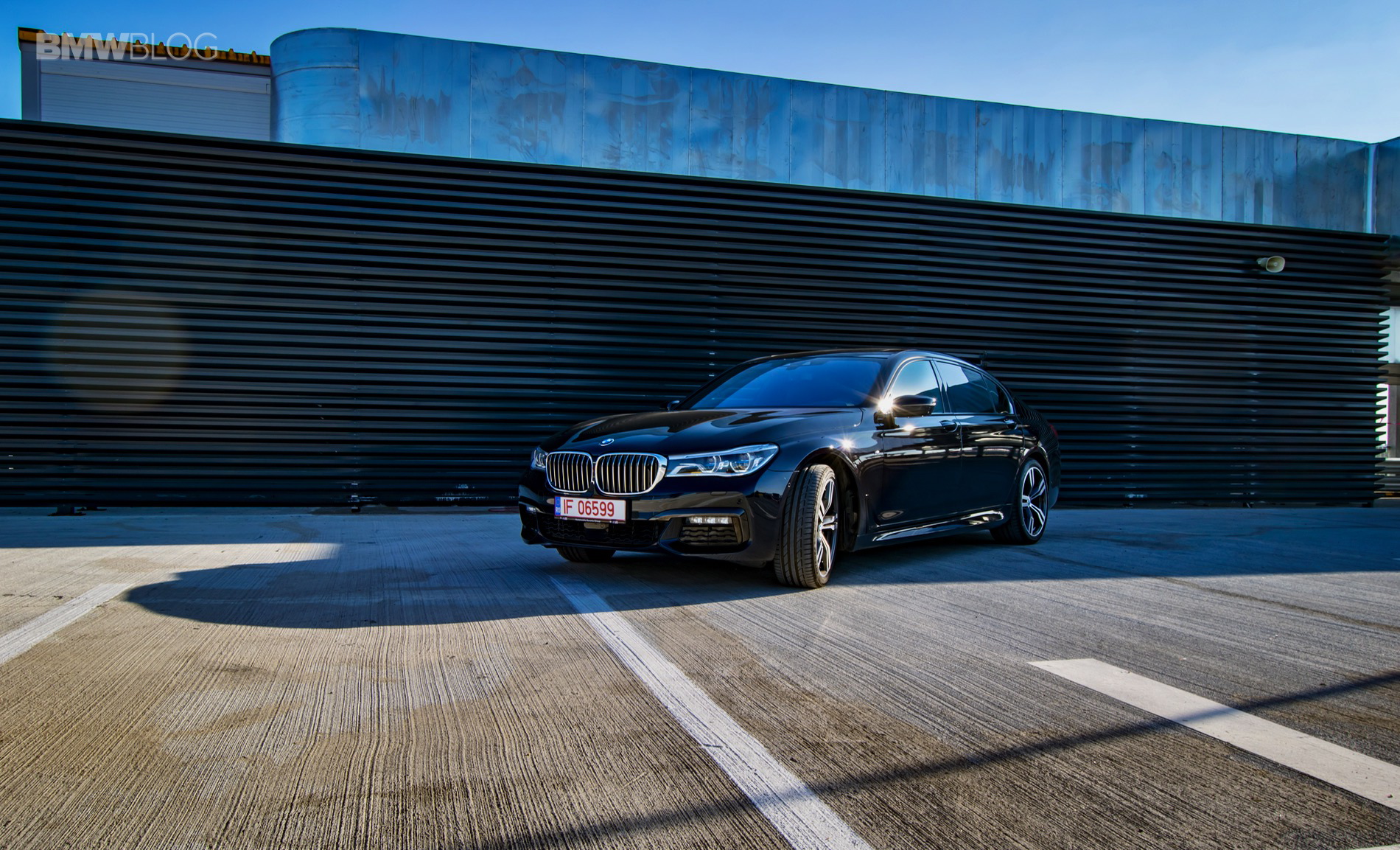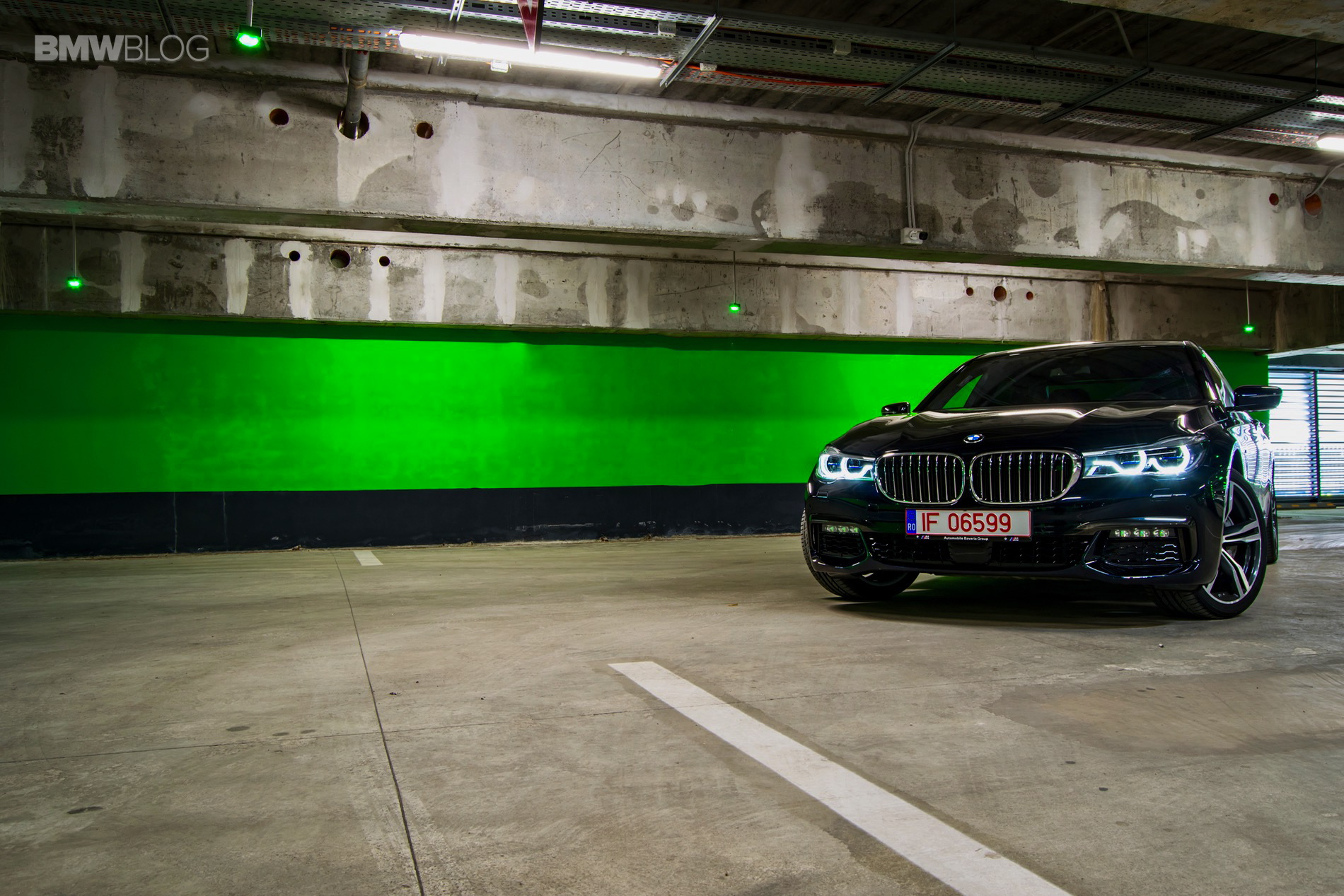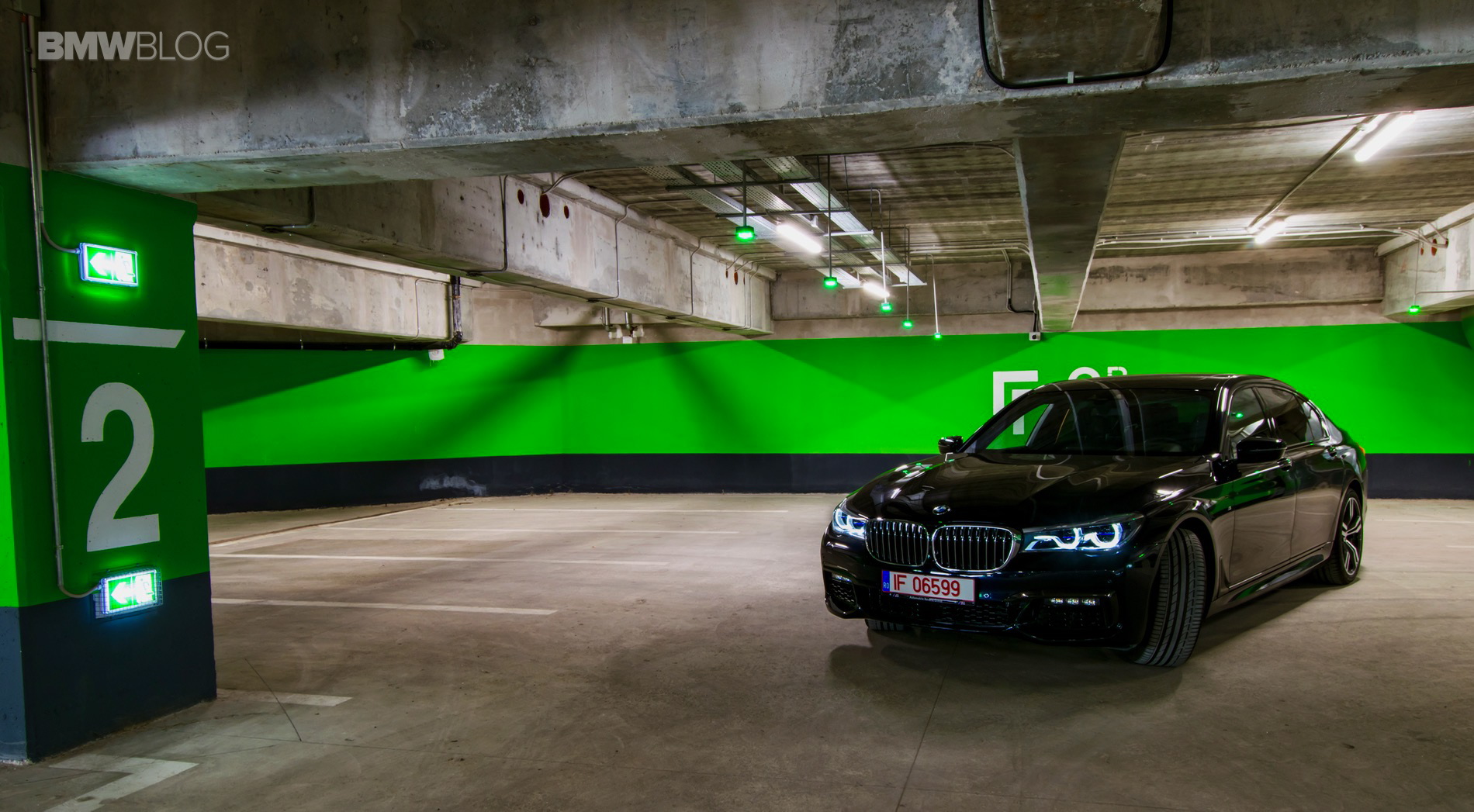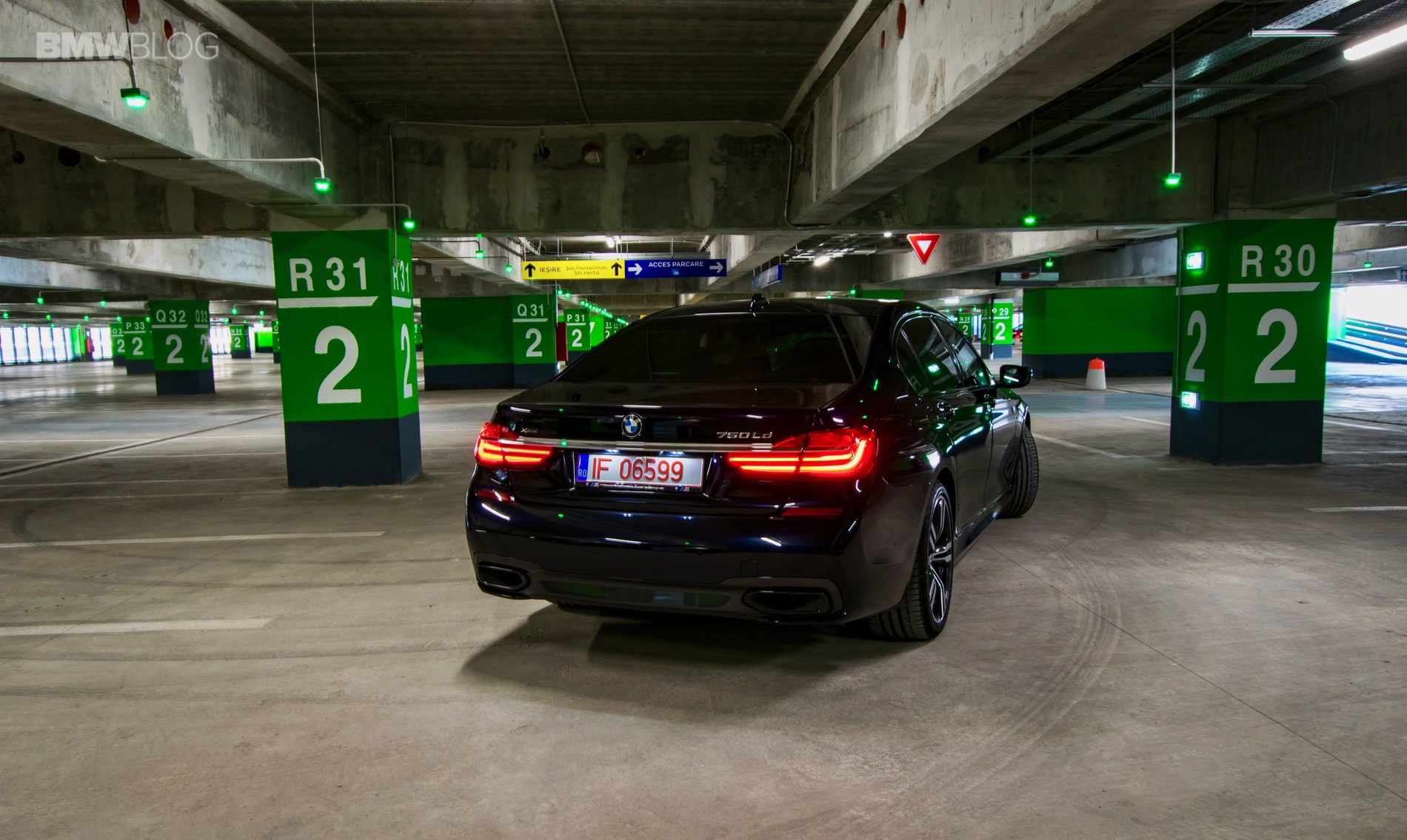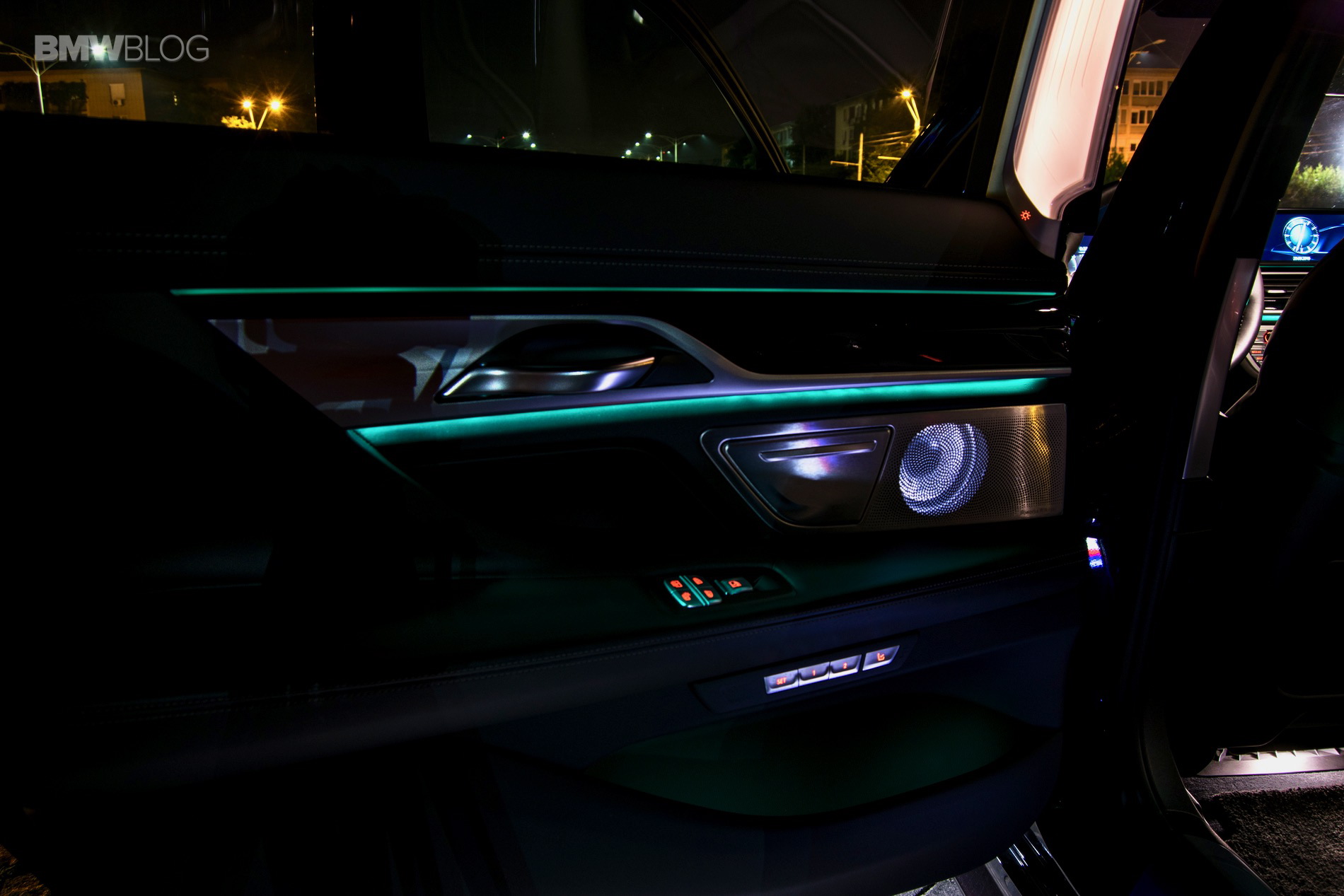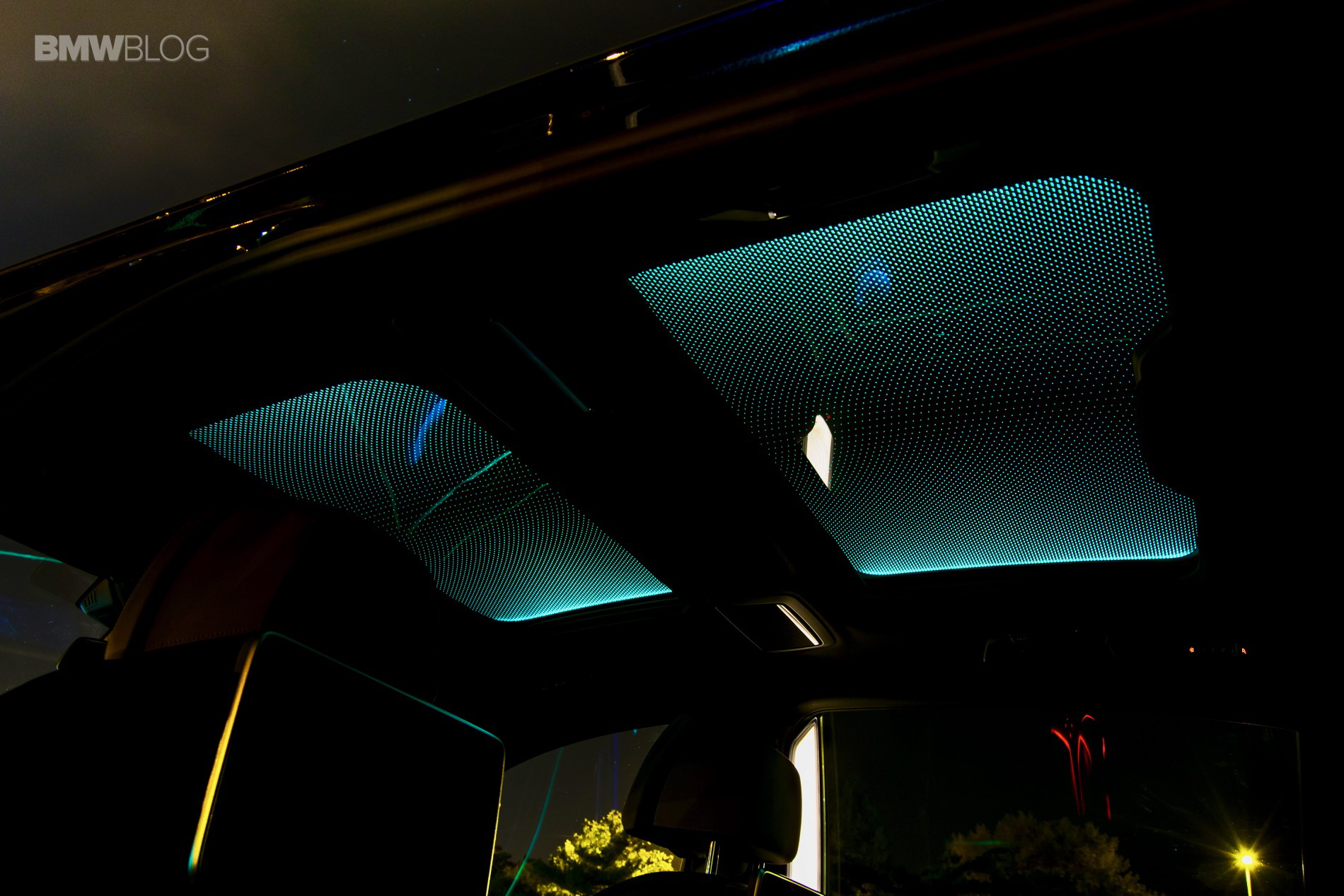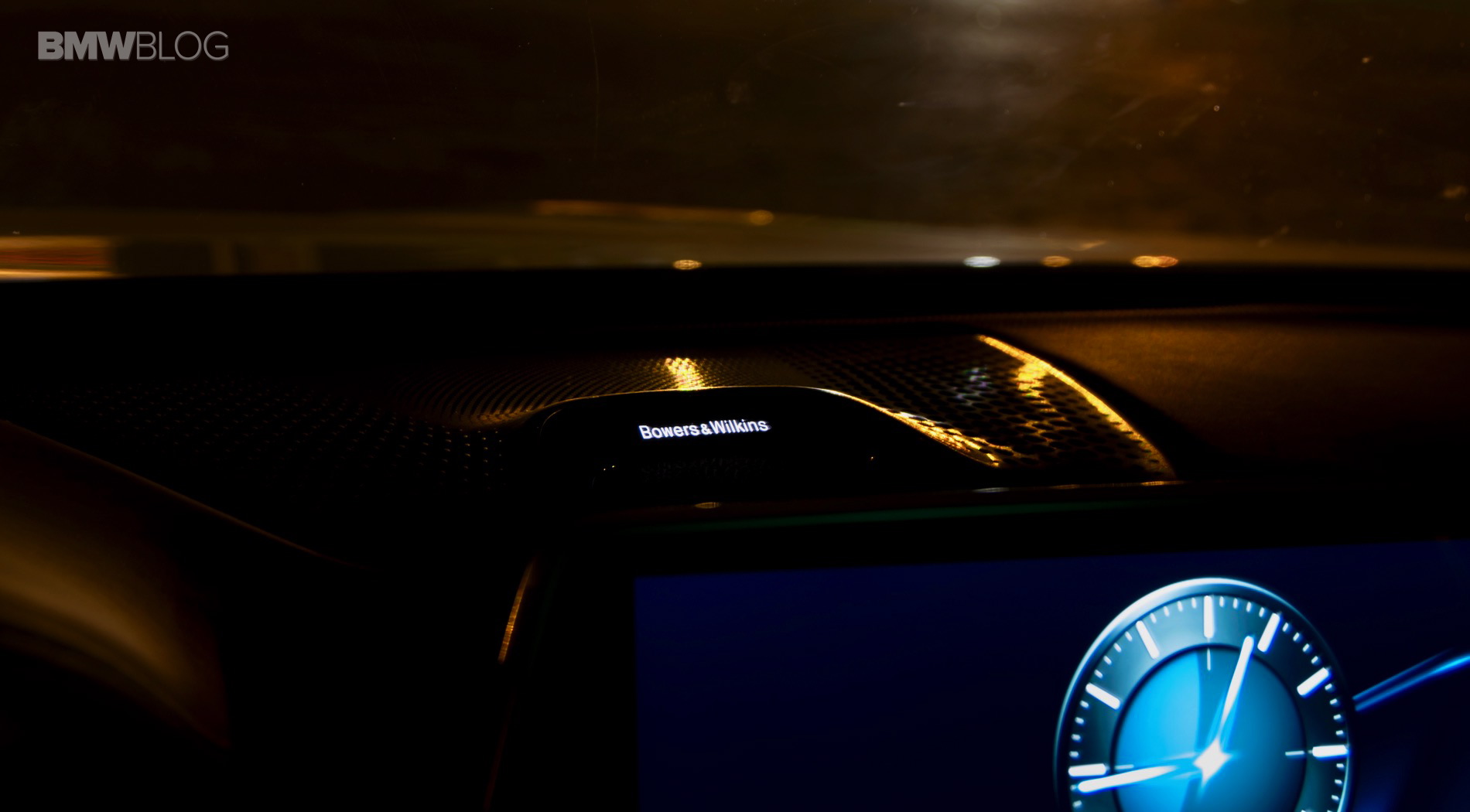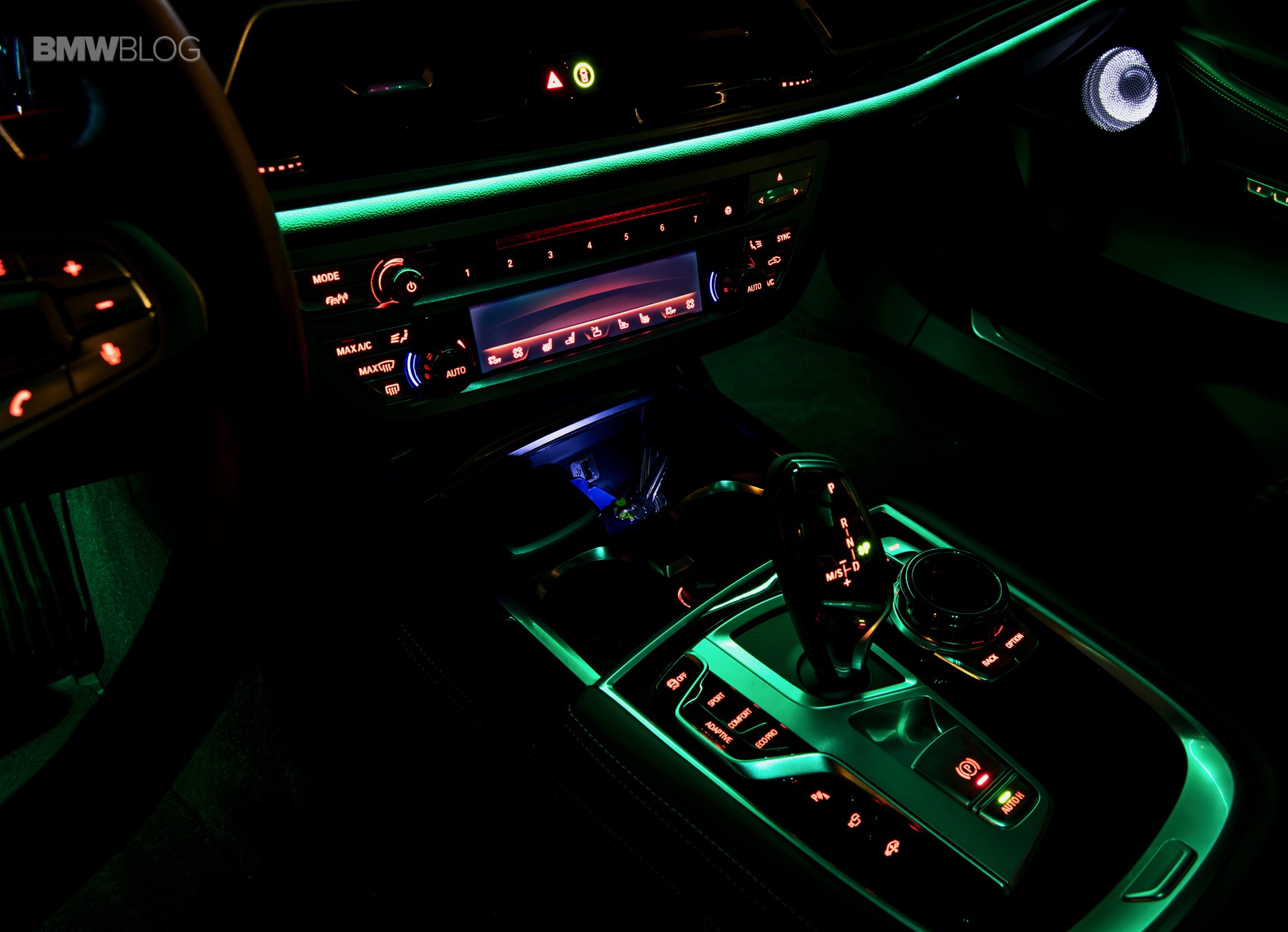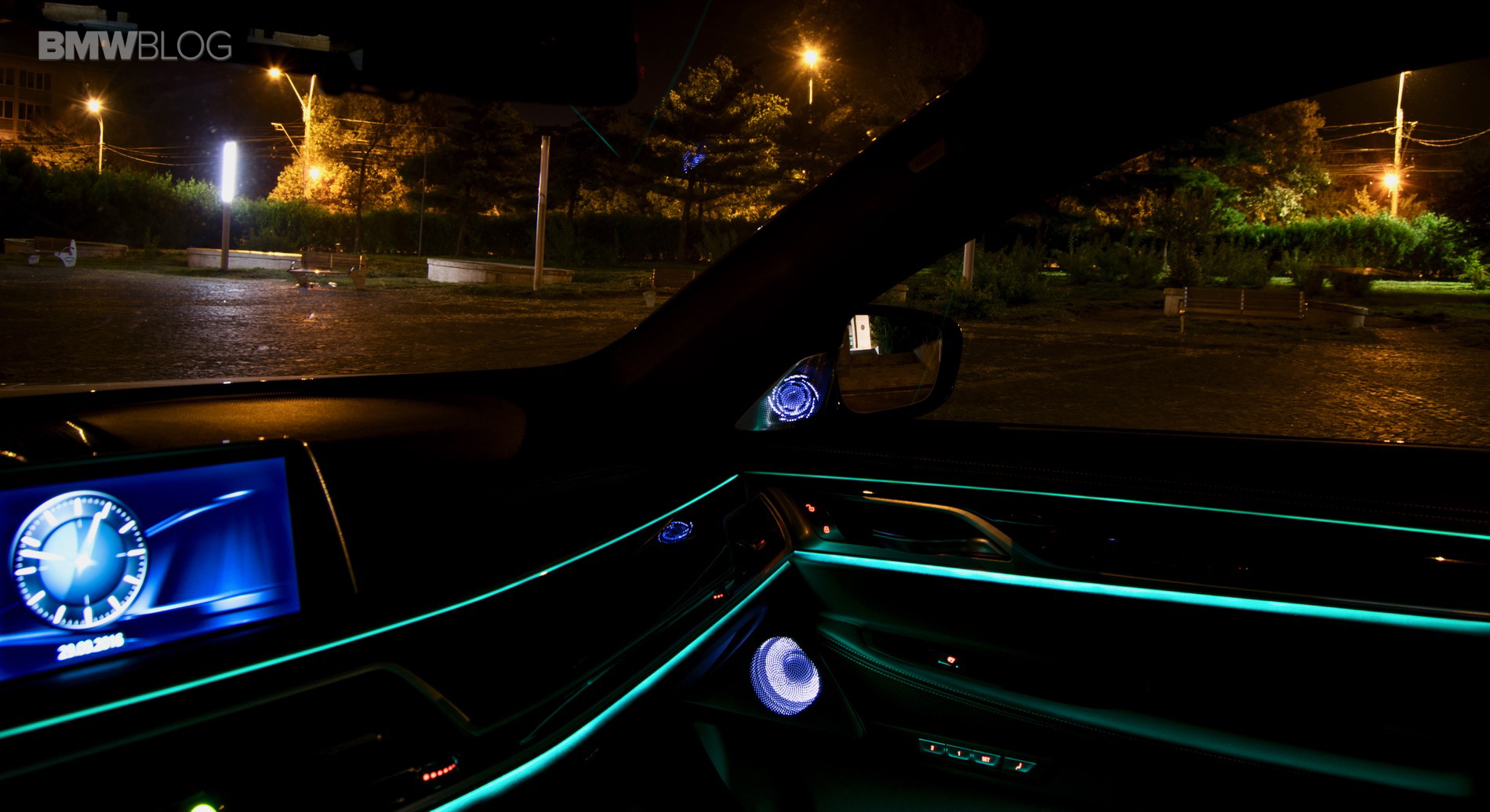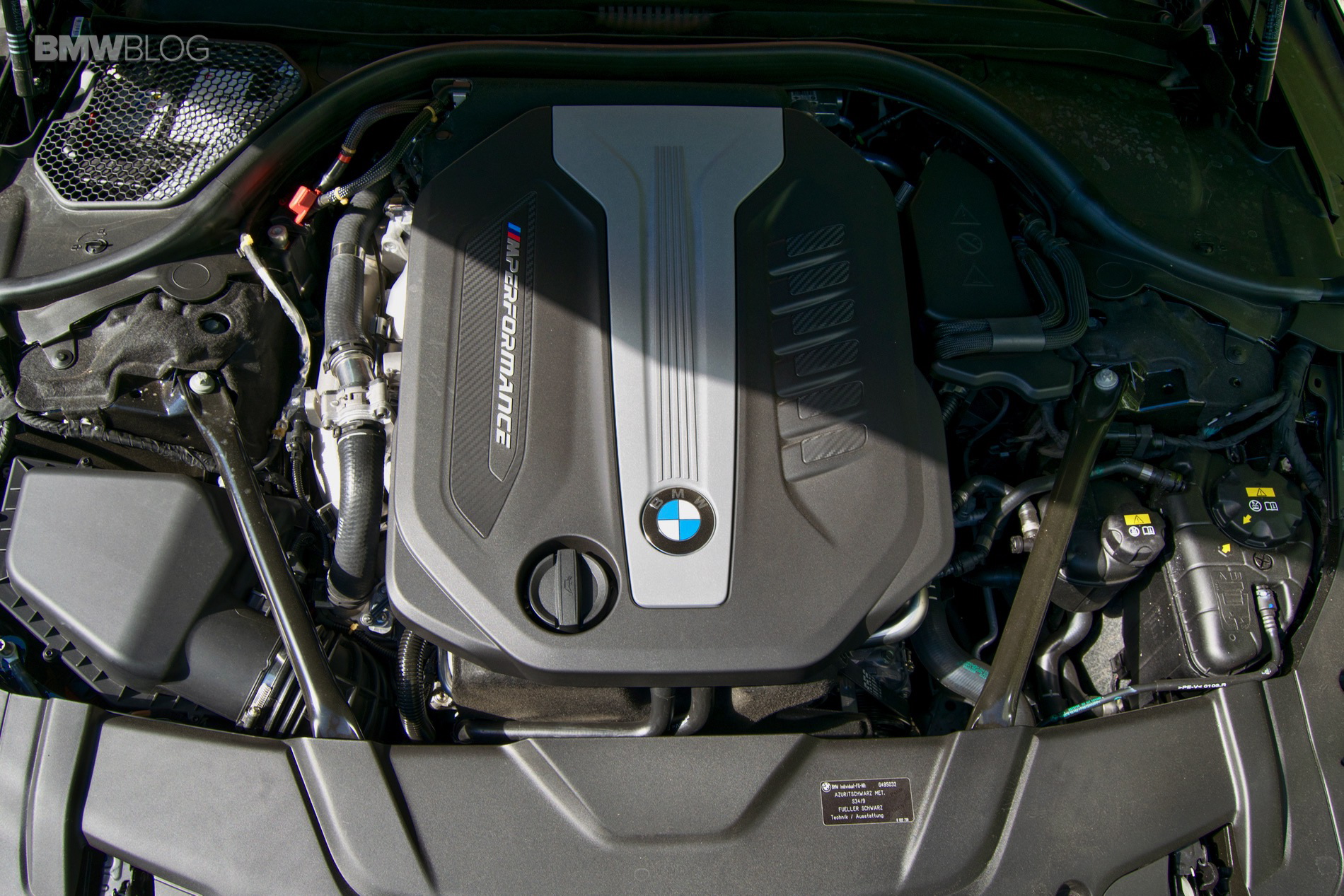Earlier this year BMW announced the world premiere of the successor to the world’s most powerful 3-liter diesel engine — the Quad-Turbo B57 engine. This new beast was about to transform every car it was fitted to in a major way. The first car to get it was the BMW 750d, the fastest diesel 7 Series ever put into production.
However, fitting this M Performance engine inside a car that isn’t being sold as an M Performance model did cause some confusion for some people out there. Pop the hood and you’ll notice that the engine cover proudly says ‘M Performance’ and yet, that’s the only place where it’s mentioned. The reasoning might have to do with the 7 Series’ success.
According to insiders at BMW, the new 7 Series isn’t selling exactly as management had expected it to. Looking at the exact figures, you might be hard pressed to understand how, as the new 7 Series did already break some sales records around the world, being one of the best-selling versions launched in the company’s 100 years of manufacturing. But fitting a monstrous M Performance B57S engine under the hood of a 7er as a premiere for the new mill, with that kind of power, does point to a certain desire from Munich to improve its pace.
With this new addition to the range, the 7 Series line-up is more diverse than ever. You can have your pick out of two petrol models, three diesels and one iPerformance plug-in hybrid version, the 740e.
The 730d and 740d are brilliant cars, but no matter how brisk they are – even the entry-level 730d does 60 mph in 5.9 seconds these days – for those looking to buy a car worth in excess of €100,000, it’s usually the best or nothing. Don’t get me wrong, go for either of those two and you’ll have plenty of power for every situation but if you want to keep up with petrol alternatives you might want to go for the top of the line 750d model.
So what does the new mill bring to the table and how does it change the character of the flagship BMW? First of all, we need to take a look at what changed under the hood.
MARVELOUS PIECE OF ENGINEERING
The new B57 engine is taking over from where the N57S left off. The latter codename was – and still is – used for the diesel engines in the BMW X6 M50d and M550d. With three turbochargers hooked up to it, the 3-liter straight-six diesel engine was the most powerful of its kind in the world, putting out 381 HP and 740 Nm (546 lb-ft) of torque. As you can imagine, this level of performance allowed all cars fitted with it to reach eye-watering speeds in no time, while also being as economical as possible.
The biggest change done for the new B57 engine however, and the one that everyone talks about, is replacing the tri-turbo setup with a quad-turbo one. Whereas the N57S unit used two small turbochargers and one bigger one, the B57 used two pairs of small and bigger turbos.
This layout gives the BMW 750d something in common with yet another quite exclusive performance car, the Bugatti Chiron. These two are the only production cars in the world right now using quad-turbocharged engines.
Such a change in engineering required other modifications to be done within the engine block, as you may have expected. First of all, there are new Piezo injectors right on top of the cylinders, delivering a maximum pressure of 2,500 bar. That kind of pressure dictated changes be done to the cylinder heads and walls, the new units being specifically developed to address both the thermal and mechanical loads that came with such extreme power outputs, handling up to 210 bar of pressure in the combustion chamber.
The cylinder head and crankcase are made using a special high-pressure compression process. Hot isostatic pressing (HIP) ensures the aluminum castings are particularly strong. The assembly of the main bearing caps and cylinder head is based on a tie rod concept, complete with a central screw to give extra strength. Other special features include the now five-layer cylinder head gasket, cylinder bores with a twin-wire arc-sprayed coating and pistons made from an aluminum/silicon alloy with remelted bowl rims, bronze liners in the pin eyes and centrally controlled cooling.
The biggest change and gains were achieved thanks to the turbochargers though and, in this regard, we need to point out a few engineering tricks that were applied here as well. First of all, as with the outgoing engine, the performance-boosting flow of compressed air into the combustion chambers is generated by multi-stage turbocharging.
The high-pressure stage revolves around two compact turbos with variable turbine geometry integrated into a single housing, while a single, very large low-pressure turbocharger has been replaced by two smaller – and therefore faster-responding – units. The Digital Diesel Electronics (DDE) system responsible for engine management has a precisely defined deployment strategy to coordinate the activity of the individual turbos, the position of the high-pressure system’s variable vanes, and the regulation of the change-over and bypass flaps, the exhaust gas butterfly valve, the wastegate and the intercooler in response to the operating situation and throttle inputs.
Generally speaking, the two low-pressure turbochargers and one of the two high-pressure turbos are permanently in action. Only under hard acceleration from idle will the two low-pressure turbochargers be bypassed by means of a flap control system. This allows boost pressure to be built up even more quickly. The second high-pressure turbocharger is brought into play at an engine speed of about 2,500 RPM.
Another new feature not present in the outgoing engine is exhaust gas recirculation for the low-pressure stage of the turbocharging system as well as the high-pressure stage. This measure increases the effectiveness of the turbochargers and, therefore, of the engine as a whole. This way, levels of nitrogen oxide emissions under high loads are also reduced.
To enhance efficiency, the engine also employs an indirect system of charge air cooling with higher capacity than that used by the outgoing engine, as well as additional compressor back plate cooling for the low-pressure turbochargers. Key to the latter is a separate low-temperature circuit – independent of the engine’s cooling system – which includes heat exchangers and an electrically operated coolant pump so that you car’s engine doesn’t break down if you decided to turn it off after doing some spirited driving. As a result of all this hard work, the engine’s efficiency has increased and its emissions have been reduced, but are these things noticeable in real life at all?
Well, if you’re expecting the extra 19 HP of the 400 HP new engine to make a huge difference you’ll be disappointed. After all, it’s less than 5 percent more compared to the old model and in terms of torque, the figure went up by even less, tapping out at 760 Nm (561 lb-ft). That doesn’t mean that this thing is a slouch then. Oh, by no means. Compared to its predecessor, the new BMW 750d is 0.3 seconds faster still, reaching 100 km/h (62 mph) in just 4.6 seconds. Now, that may not seem extremely impressive but remember that this is a 2-ton limousine we’re talking about, here. Not long ago, that kind of acceleration was reserved for true M models, not an executive carrier. Oh, and don’t forget we’re still talking about a 3-liter diesel engine.
As I already said, the difference compared to the old 381 HP mill isn’t all that great in terms of straight up power. You do get the same out-of-breath feeling at first when you accelerate but the biggest, unexpected change happens when you enter Sport mode. That’s because the new mill is even more responsive, leaving turbo lag to become a rather distant memory. The throttle response is sharper than ever, even for a diesel engine. Full torque is available from 2,000 RPM but from about 1,250 RPM you can already rely on a sharp pedal response and Sport mode will make sure you rarely end up under this value on the tachometer. Tilt the gearshift lever to the left and you’ll soon forget that this is a 5-meter long car meant for carrying CEOs and not racing.
The engine was also tuned to replicate the character of a powerful petrol V8 engine, so the torque band is nowhere near as brutal as you might expect it to be. Sure, you’re still handling 760 Nm (561 lb-ft) of torque with your right foot but it doesn’t feel that way. Maybe it’s because of the smoothness of the inline 6-cylinder layout but we have a hunch the engineers worked really hard to get this type of response out of the engine.
Speaking of torque, it does take a while to get used to it. As a matter of fact, more than once I found myself incapable of keeping my right foot pressed to the floor when launching the car as the sudden delivery of torque and inertia made me lose my composure. It took a couple of tries but eventually I managed to record a 0-100 km/h (62 mph) sprint time of 4.7 seconds, right on par with BMW’s claims, as our tester was a 750Ld model.
DESIGN
Dressed in Azurite Blue, wearing the M Sport package, blacked out windows and bi-color wheels, this thing looked like a proper menace on the road. Inside the cabin everything followed the same black on black theme, with black Nappa extended leather everywhere and similarly colored trims everywhere. As a matter of fact, there wasn’t one optional feature that wasn’t ticked on this particular tester, our car coming with everything you could possibly wish on a BMW flagship today. The price tag? Starting off at €115,390, the as-tested value rose to €170,752, a figure that could give people nightmares.
But then again, that included the €4,390 M Sport package, the €3,005 Executive Drive Pro option, the €2,241 Executive Lounge Seating with Executive Lounge rear console that was another 3,005 Euros and the €5,754 Bowers & Wilkins Diamond surround sound system that was worth every penny. An ‘honorable’ mention also has to go to the BMW Night Vision with object recognition system that was another 3,005 Euros and wasn’t used once.
Basically, this is the epitome of a BMW 7 Series fitted with a jewel of an engine that will turn your everyday into a trip into Paradise. And while a lot of people might say that the best seat in the car would be the rear right side one, I’m having mixed feeling about it.
Sure, back there, with a car equipped with everything you can get on a 7 Series, you’d feel like a king. Fold the front passenger seat and stretch your legs, activate the massage function of your seat and heat it up or cool it down while admiring the landscape, thanks to the panoramic sunroof, and there’s little this car can’t cater to. Our tester even came with four Blu-Ray discs for the rear-seat entertainment that would transform this BMW into a rolling cinema thanks to the Bowers & Wilkins sound system.
And that’s what a lot of people would go for. With the sunblinds closed people probably wouldn’t even notice you sitting in the back, offering the perfect comfy retreat from the busy city life going on outside. It’s a relaxing cruise as well, even though our tester was fitted with the M Sport package. While that may sound appealing even to myself after a long day at work, to me, the driver’s seat sounds like the best one in the house.
That’s because this thing can make you totally forget what you’re driving. Reaching 100 km/h takes roughly four and a half seconds, going for the electronically limited top speed of 250 km/h (155 mph) takes just a couple more and every single system in the car is screaming at you to go even harder when in Sport mode.
DRIVING EXPERIENCE
All 750d models, whether normal or long wheelbase versions come as standard with xDrive so that the transmission can handle the enormous torque but this is no ordinary all-wheel drive system. Most of the power will be sent to the rear wheels and with DSC off, you can actually drift this limousine a bit, prompting curious looks from bystanders and other traffic participants as well.
Then you chip in the Executive Drive Pro system, the adaptive dampers and integral steering together with the 400 HP and 760 Nm of torque coming in from under the hood and you get a proper fun-to-drive car that doesn’t show its size or weight at any given moment.
It’s actually incredible how this thing can move. The power delivery is silky smooth and progressive, the car pulling like a freight train all the time, boggling your mind in the process. As a matter of fact, as I’ve mentioned before, you might have a problem keeping your foot down on the accelerator, as that’s only reserved for the bravest of driver’s.
Bends and tight corners are handled majestically and the car truly comes alive when you drive it hard. But in Comfort or Eco Pro mode, it will sacrifice everything to transform your ride into a serene experience. That means, as a driver, you will feel disconnected from the road, thanks to the air suspension. But then again, that’s what makes this such a complete package.
It’s the duality of the car that makes you fall in love with it. This is a 7 Series and it shouldn’t behave like this and yet… It does. Yes, to some, the M badges thrown around here and there might be a bit distasteful considering the size of it but, in terms of driving enjoyment, it’s as close as it gets in a package of this size.
The best thing of all? Apart from improving throttle response and the amount of fun you can have behind the wheel, this thing is also more efficient than before. I know efficiency usually doesn’t matter to someone willing to pay a small fortune on a car but range does. We managed to get seriously close to 1,000 km (620 miles) on one tank and that is truly an impressive result. Outside the city limits, even pushed to the absolute speed limit, our luxo-barge didn’t go over 7 l/100 km (33.6 mpg) with an average of 130 km/h (81 mph) on the dash. Around town, that figure went up to a maximum of 10 l/100 km (23.5 mpg) but that was only during the most crowded rush hours. Most of the time, the figure hovered around 9 l/100 km (26.1 mpg) which is more than reasonable considering the performance figures.
CONCLUSION
Saying goodbye, therefore, wasn’t an easy thing. The 750d enthralled me and made me wonder what engineers could come up with in the future, to make us more amazed of their findings. Some people are claiming that internal combustion engines are reaching – or have already reached – their peak in terms of technology and driving a car fitted with the B57 engine might certainly convince you. But then again, in the back of my mind, I have to hope that things can get even better so that I can keep going. I need to tell myself that another revolutionary breakthrough is around the corner and that there’s something to aspire to. And yet, it’s hard to do that when you’re met with the brilliance of this engine.
Is this the perfect car? Definitely not, as perfection in this field will probably never be reached. Is it worth that price tag? Probably not, as the value of the dollar will always be discussed in millions of ways. What this car definitely represents, though, is the pinnacle of diesel technology, a masterpiece with which BMW is showing the world that its engineers are still amongst the best in the business and that it can further improve on designs that were considered excellent to begin with. And while the jewel under the hood will occupy my dreams for a while, making me dream of abusing it on other models as well, it is the duality of the 750d that makes me crave one with a feeling of utter desperation.
BMW 750Ld xDrive
Exterior Appeal - 9
Interior Quality - 10
Steering Feedback - 8
Performance - 10
Handling - 9
BMWness/Ultimate Driving Machine - 10
Price Point - 8
9.1
While the jewel under the hood will occupy my dreams for a while, it is the duality of the 750d that makes me crave one with a feeling of utter desperation.



